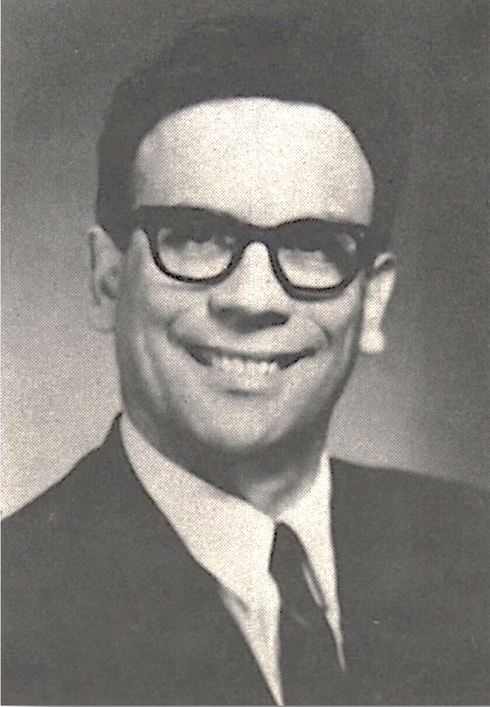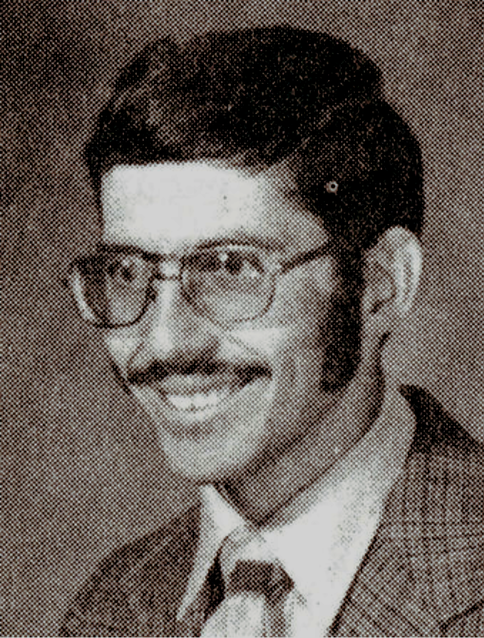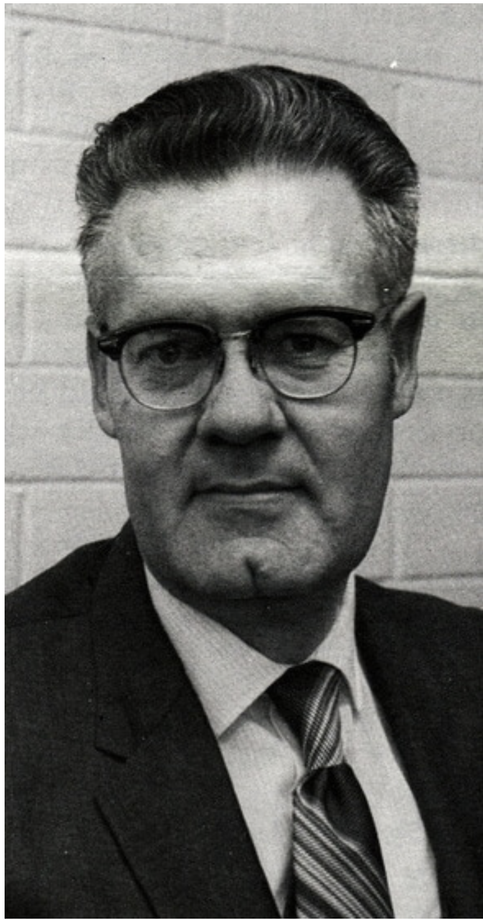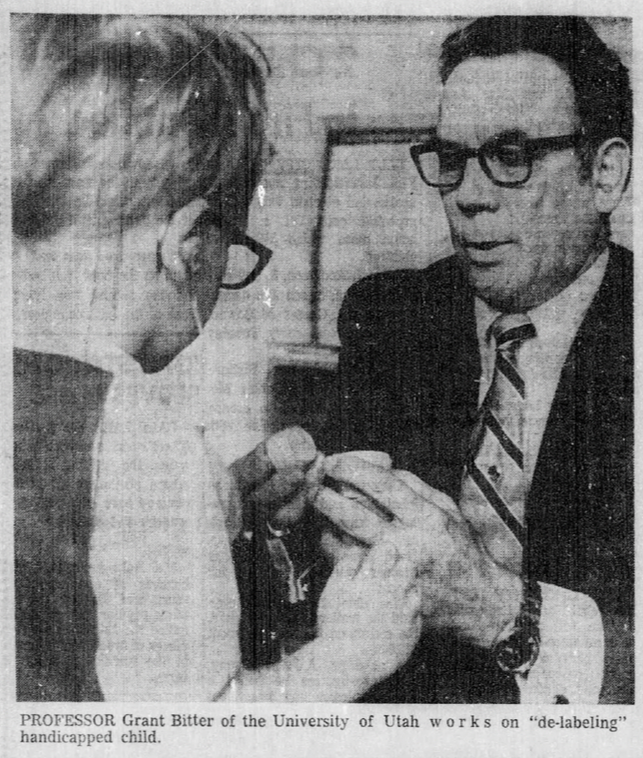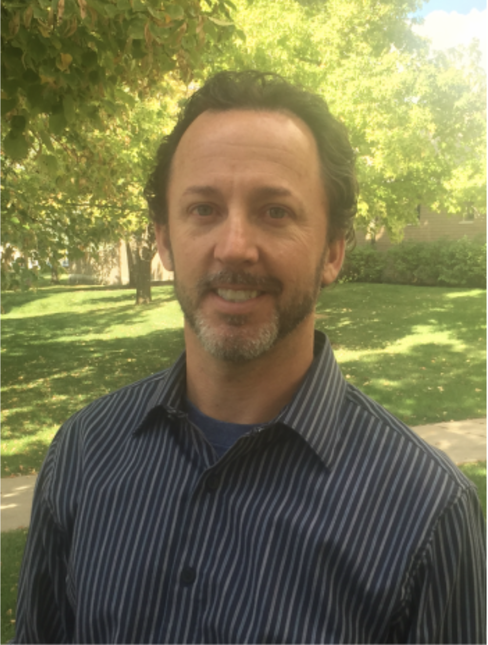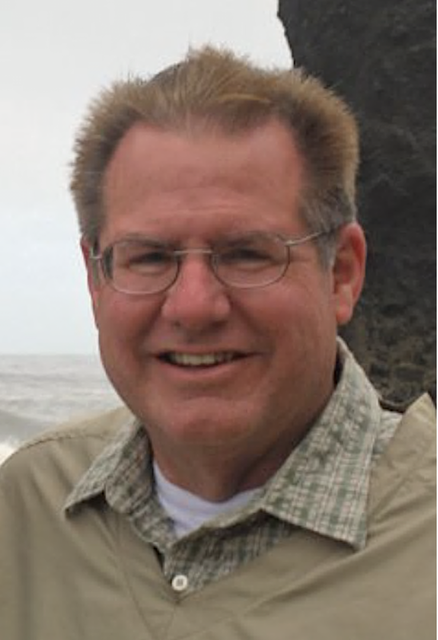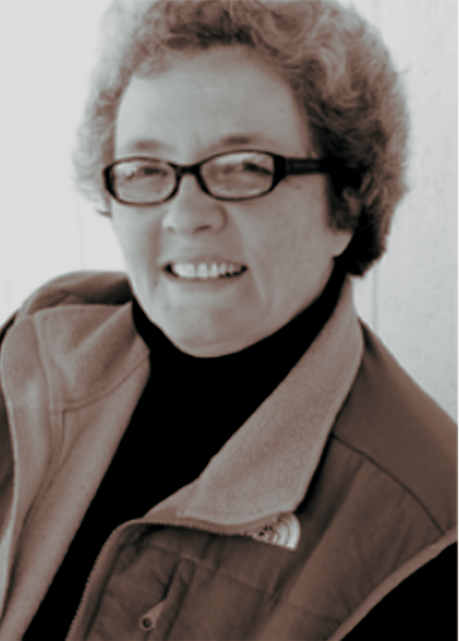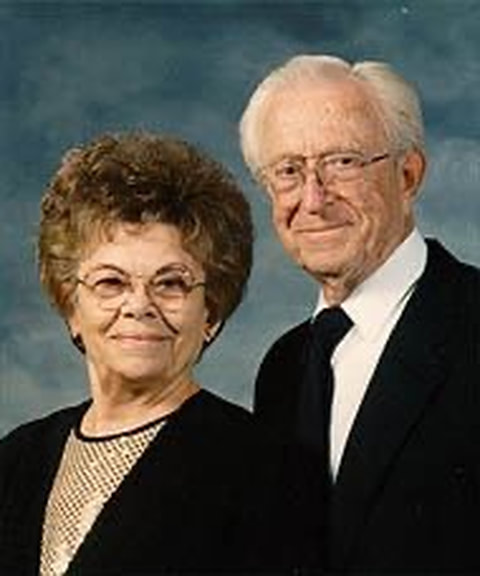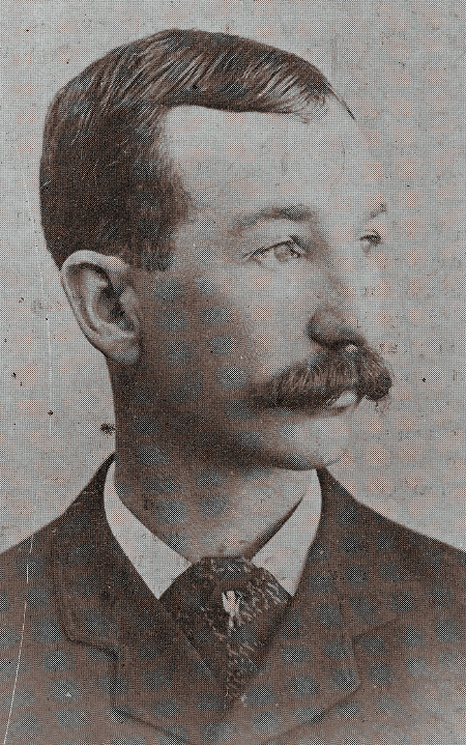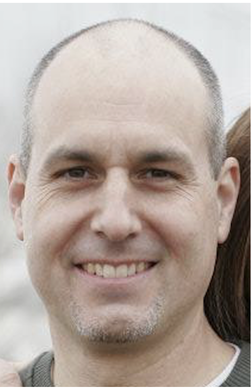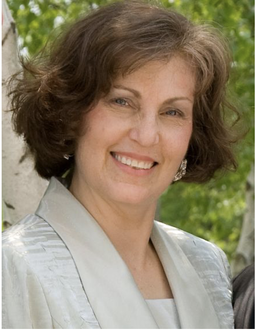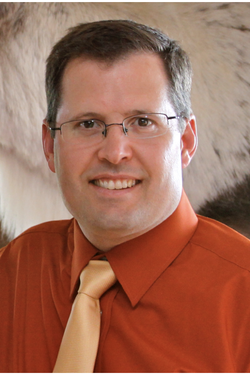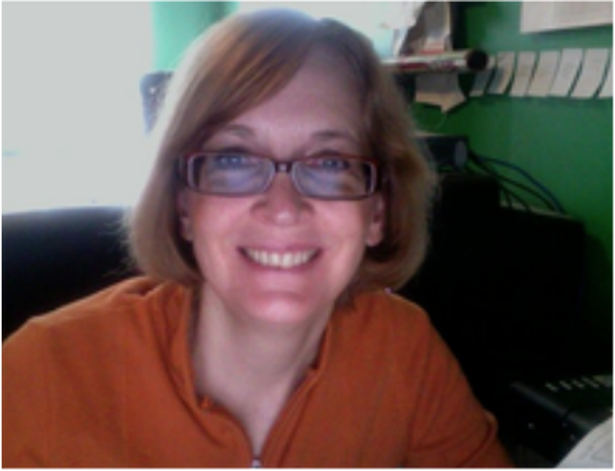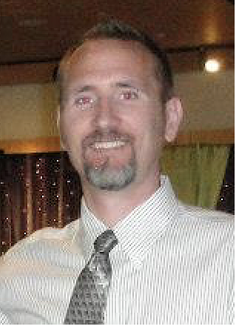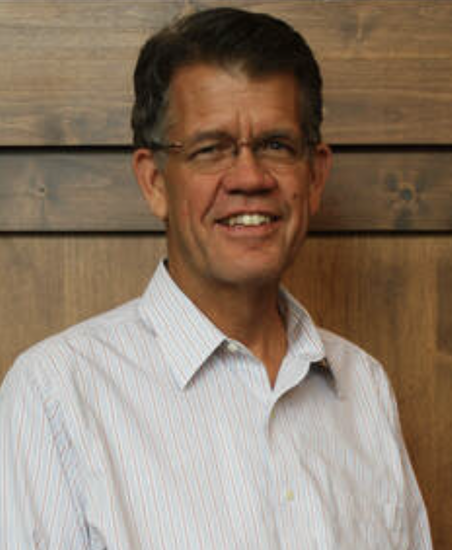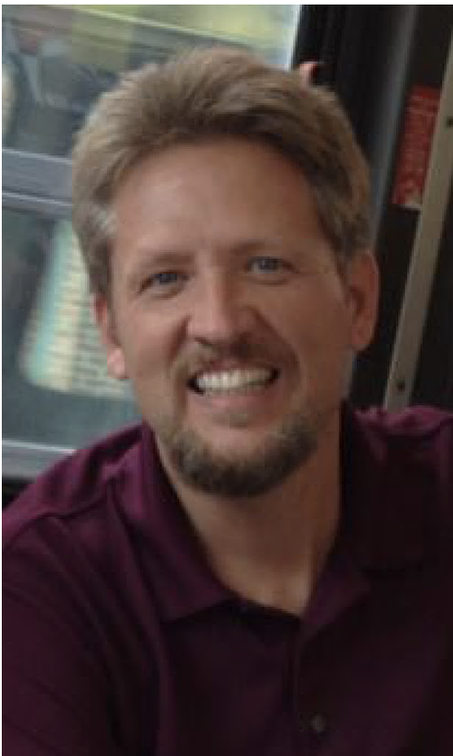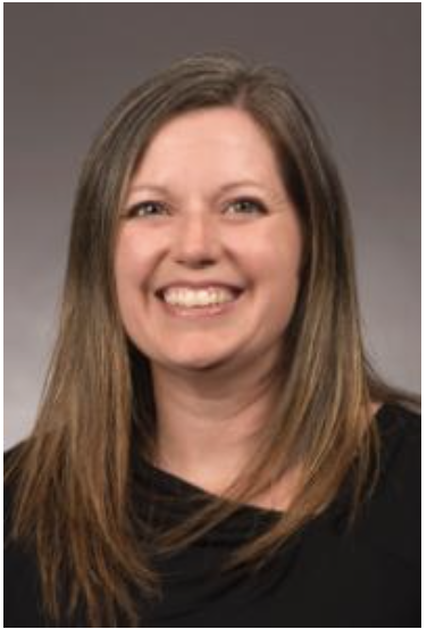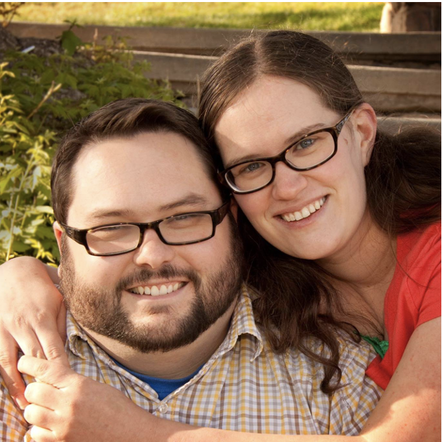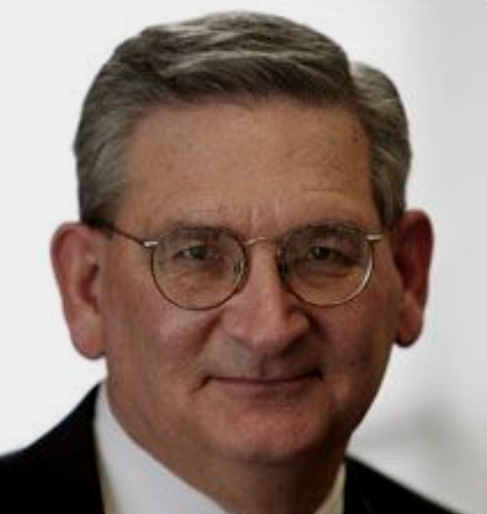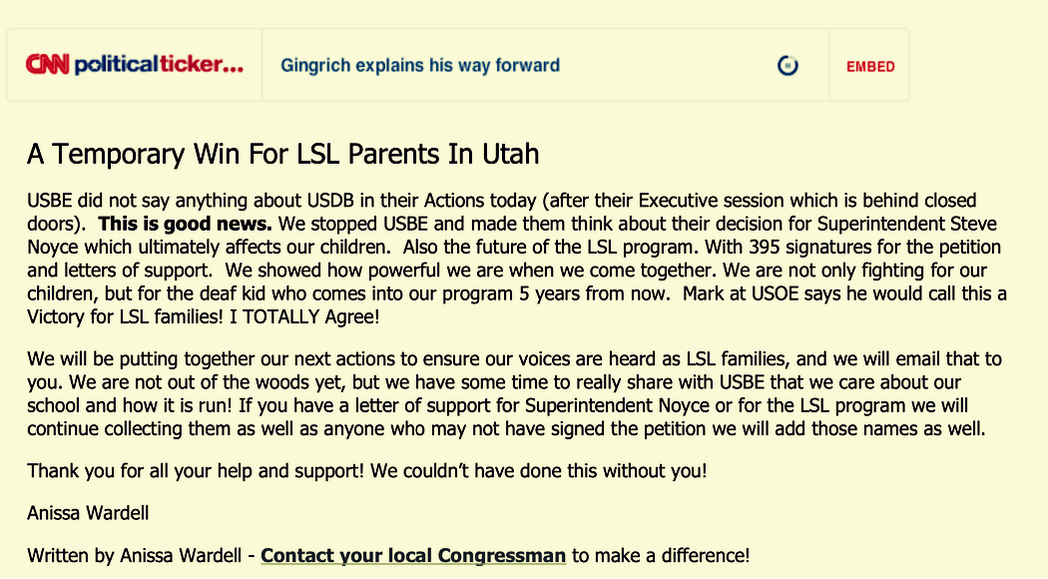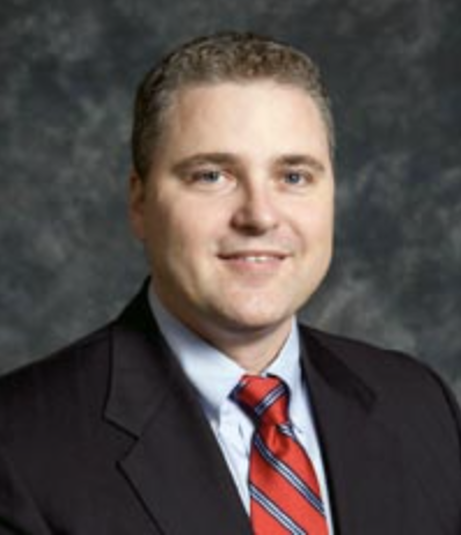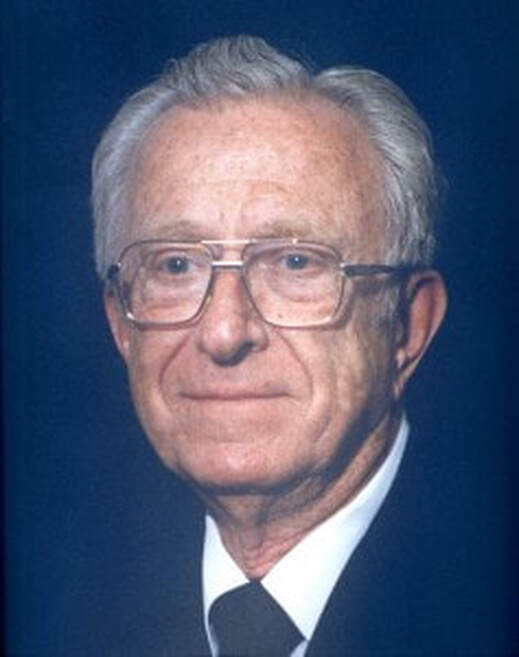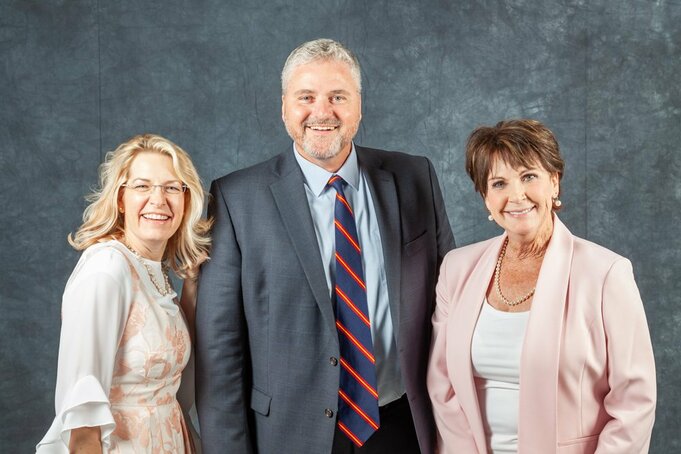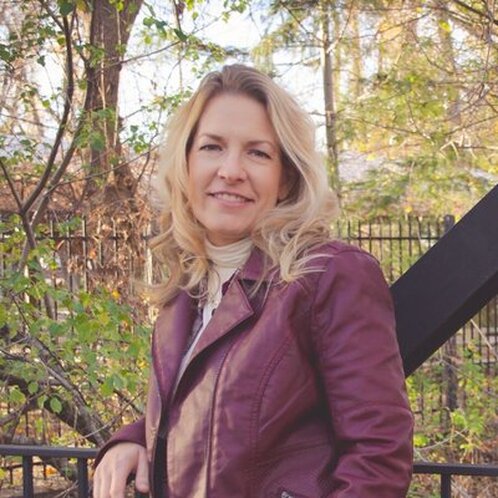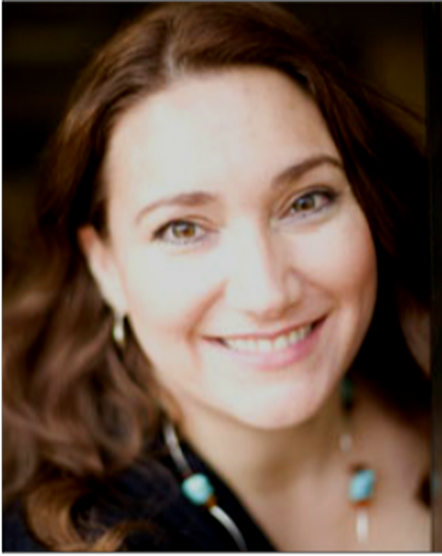Dr. Robert G. Sanderson's Dream
for an Equal Deaf Education System
Compiled & Written by Jodi Becker Kinner
Edited by Bronwyn O'Hara
Co-Edited by Valerie G. Kinney
Published in 2016
Updated in 2014
Edited by Bronwyn O'Hara
Co-Edited by Valerie G. Kinney
Published in 2016
Updated in 2014
Author's Note
As a parent of two Deaf children, my passion for deaf education comes from my personal journey. My father-in-law, Kenneth L. Kinner, also sparked my interest and shared with me the history of deaf education in Utah, including its oral and mainstreaming impact. This inspired me to meticulously document the controversial events of that era. If it weren't for him, I wouldn't be able to advocate for my kids without knowing the history. My studies at the Gallaudet School Social Work Program further deepened my understanding of the complexities of education, legislation, and policy. Moreover, my role on the Institutional Council of the Utah Schools for the Deaf and Blind has truly empowered me to advocate for my children and others in Utah who are Deaf, Hard of Hearing, DeafBlind, and DeafDisabled. This platform has given me the strength and voice to make a difference.
The Utah Schools for the Deaf and Blind is a state school that promotes inclusivity by serving a diverse student population of Deaf, Hard of Hearing, Blind, Low Vision, DeafBlind, and DeafDisabled individuals. When we discuss deaf education, we will primarily refer to the 'Utah School for the Deaf.' On the other hand, when we talk about the entire state school, we will use the term "Utah Schools for the Deaf and the Blind."
In the 1960s and 1970s, the Utah School for the Deaf underwent significant changes. The dual-track program and the two-track program, divided into an oral department and a sign language department, significantly impacted the lives of Deaf students and their families. To avoid confusion, we refer to the "dual-track program" from the 1960s and the "two-track program" from the 1970s on our education webpages. These programs will help us understand how these changes have affected students, teachers, administrators, and the Utah Association for the Deaf.
The "Deaf Education in Utah" webpages contain repetitive and overlapping sections, similar to those on other education webpages. The introductions to each section are also similar, and they will directly get to the point of the webpage's topic.
When writing about individuals for our history website, I choose to use their first name to acknowledge all individuals who contribute to and advocate for our community's causes. Our patriarchal culture often expects to recognize women's advocacy, contributions, and achievements using their husbands' last names instead of their own. However, in the spirit of inclusivity, equality, and recognizing each individual's unique identity, I have decided to use their first names throughout the website. This decision reaffirms our commitment to these values and highlights the significant role of women's advocacy in our community.
Our organization, previously known as the Utah Association for the Deaf, changed its name to the Utah Association of the Deaf in 2012. The association was known as the Utah Association of the Deaf from 1909 to 1962. The association changed its name to the Utah Association for the Deaf in 1963. Finally, in 2012, the association reverted to its previous name, the Utah Association of the Deaf. When writing the history website, I use both "of" and "for" to reflect the different eras of the association's history.
As an advocate for deaf education in Utah, I have personally witnessed firsthand the inequality in the deaf education system. The Utah School for the Deaf has long been criticized for its favoritism towards oral education, a stance that has led to numerous conflicts between the oral and sign language departments in the dual-track and two-track programs. While working on Utah Deaf History, I and other ASL/English bilingual supporters found ourselves battling with Steven W. Noyce, the superintendent of the Utah Schools for the Deaf and the Blind, who was a staunch advocate for the oral movement. During this period, our Deaf Education Advocate, Dr. Robert G. Sanderson, penned an article in the 1992 UAD Bulletin titled "My Dream." This article was an essential piece in the history of deaf education, as it outlined a more inclusive and balanced approach to education that could provide solutions for both oral and sign language departments. However, it wasn't until 2016, under the hybrid program, that this vision finally became a reality, as explained on this webpage.
Thank you for your interest in the 'Deaf Education History in Utah' webpage of this website. Your engagement is invaluable to our mission to educate and advocate for the Deaf community and its history in Utah.
Enjoy!
Jodi Becker Kinner
The Utah Schools for the Deaf and Blind is a state school that promotes inclusivity by serving a diverse student population of Deaf, Hard of Hearing, Blind, Low Vision, DeafBlind, and DeafDisabled individuals. When we discuss deaf education, we will primarily refer to the 'Utah School for the Deaf.' On the other hand, when we talk about the entire state school, we will use the term "Utah Schools for the Deaf and the Blind."
In the 1960s and 1970s, the Utah School for the Deaf underwent significant changes. The dual-track program and the two-track program, divided into an oral department and a sign language department, significantly impacted the lives of Deaf students and their families. To avoid confusion, we refer to the "dual-track program" from the 1960s and the "two-track program" from the 1970s on our education webpages. These programs will help us understand how these changes have affected students, teachers, administrators, and the Utah Association for the Deaf.
The "Deaf Education in Utah" webpages contain repetitive and overlapping sections, similar to those on other education webpages. The introductions to each section are also similar, and they will directly get to the point of the webpage's topic.
When writing about individuals for our history website, I choose to use their first name to acknowledge all individuals who contribute to and advocate for our community's causes. Our patriarchal culture often expects to recognize women's advocacy, contributions, and achievements using their husbands' last names instead of their own. However, in the spirit of inclusivity, equality, and recognizing each individual's unique identity, I have decided to use their first names throughout the website. This decision reaffirms our commitment to these values and highlights the significant role of women's advocacy in our community.
Our organization, previously known as the Utah Association for the Deaf, changed its name to the Utah Association of the Deaf in 2012. The association was known as the Utah Association of the Deaf from 1909 to 1962. The association changed its name to the Utah Association for the Deaf in 1963. Finally, in 2012, the association reverted to its previous name, the Utah Association of the Deaf. When writing the history website, I use both "of" and "for" to reflect the different eras of the association's history.
As an advocate for deaf education in Utah, I have personally witnessed firsthand the inequality in the deaf education system. The Utah School for the Deaf has long been criticized for its favoritism towards oral education, a stance that has led to numerous conflicts between the oral and sign language departments in the dual-track and two-track programs. While working on Utah Deaf History, I and other ASL/English bilingual supporters found ourselves battling with Steven W. Noyce, the superintendent of the Utah Schools for the Deaf and the Blind, who was a staunch advocate for the oral movement. During this period, our Deaf Education Advocate, Dr. Robert G. Sanderson, penned an article in the 1992 UAD Bulletin titled "My Dream." This article was an essential piece in the history of deaf education, as it outlined a more inclusive and balanced approach to education that could provide solutions for both oral and sign language departments. However, it wasn't until 2016, under the hybrid program, that this vision finally became a reality, as explained on this webpage.
Thank you for your interest in the 'Deaf Education History in Utah' webpage of this website. Your engagement is invaluable to our mission to educate and advocate for the Deaf community and its history in Utah.
Enjoy!
Jodi Becker Kinner
Acknowledgment
I wanted to thank my father-in-law, Kenneth L. Kinner, for sharing about the dual-track and two-track programs at the Utah School for the Deaf, as well as the impact of the "Y" system. As the father of two Deaf children, Deanne and Duane, his first-hand experience within the system was a valuable source of information. Because I was so fascinated by those segregation programs at Ogden's residential campus while documenting historical events, I dove more into them, but I could not find the word "Y" system Ken had told me about in any documents for validation. My search led me to Dr. Grant B. Bitter's papers that he donated to the J. Willard Marriott Library at the University of Utah. His paper played a crucial role in validating the existence of the "Y" system. One of his papers stated, "Thus there would be a true dual system rather than the present "Y" system that forces all parents to place their children under oral programs until the 6th grade or 7th grade year." The date on which Dr. Bitter wrote his paper about this program is unknown. It appears that Dr. Bitter penned his paper in the early 1970s to prepare for the meeting that followed the replacement of the dual-track program with a two-track program, which eliminated the "Y" system in 1970. So, I'm grateful to Ken for telling me about the "Y" system and how it affected many families. Otherwise, we would not have known about it or understood what "Y" means when we ran across Dr. Bitter's paper.
When Steven W. Noyce became superintendent of the Utah Schools for the Deaf and Blind in 2009, his support for oral and mainstream education raised concerns within the Utah Deaf community. As a parent of Deaf children, I was worried that Steven Noyce would carry Dr. Grant B. Bitter's legacy by promoting oral education and mainstreaming all Deaf children in Utah. On November 3, 2009, I raised this issue with him and Associate Superintendent Jennifer Howell. I knew that Steven, a former student of Dr. Bitter's Oral Training Program at the University of Utah and a long-time employee at the Utah School for the Deaf, was fully aware of the controversy between oral and sign language. To protect the ASL/English bilingual program, I detailed Dr. Grant B. Bitter's controversial history of oral and mainstreaming advocacy, as well as the profound impact of the dual-track and two-track programs at the Utah School for the Deaf. I recommended providing an equal balance between the Listening and Spoken Language and ASL/English bilingual options for families of Deaf children. I also requested preventive measures to avoid the recurrence of similar issues. Steven acknowledged the accuracy of the information and said, "This is the most accurate paper I have ever read." This recognition of the paper's credibility underscores the importance of our advocacy efforts. I owe a debt of gratitude to my father-in-law, Kenneth L. Kinner, for sharing this critical history with me. His insights and knowledge have proven invaluable in our advocacy efforts for deaf education. Without his help, we couldn't have opposed the oral agenda.
Thank you, Ken!
Jodi Becker Kinner
Thank you, Ken!
Jodi Becker Kinner
Dr. Grant B. Bitter,
the Father of Mainstreaming
the Father of Mainstreaming
Under the leadership of Dr. Grant B. Bitter, a firm advocate for oral and mainstream education, Utah's groundbreaking movement to mainstream all Deaf children began in the 1960s. Dr. Bitter's efforts earned him the title of 'Father of Mainstreaming.' This movement was in stark contrast to the historical significance of Dr. Martha Hughes Cannon, the country's first female state senator and a member of the Board of Trustees of the Utah School for the Deaf and Blind, who in 1896 spearheaded a proposal for the 'Act Providing for Compulsory Education of Deaf, Dumb, and Blind Citizens,' which made attendance at the Utah School for the Deaf and Blind mandatory (Martha Hughes Cannon, Wikipedia, April 20, 2024). Her legislation led to its successful passage in 1896 and marked a turning point in the education of Deaf and Blind children. However, Dr. Bitter advocated for mainstreaming all Deaf children, paving the way for widespread acceptance of this approach in 1975 with the passage of Public Law 94-142, now known as the Individuals with Disabilities Education Act.
His daughter, Colleen, was born deaf in 1954, which was another reason for his dedication to the advancement of both oral and mainstream education. Dr. Bitter supported the idea of mainstreaming for all Deaf and hard of hearing children for two main reasons: his own Deaf daughter and his internship experience at the Lexington School for the Deaf. During his master's degree studies, he interned at Lexington School for the Deaf, an oral school, and was shocked to see young children having to leave their parents for a week, often crying and screaming. His role as a father of a Deaf child, as well as his experience, inspired him to advocate for mainstreaming, allowing Deaf children to attend local public schools at home (Grant Bitter: Everett L. Cooley Oral History Project, March 17, 1987).
In the 1970s, Dr. Stephen C. Baldwin, a Deaf educator who served as the Total Communication Division Curriculum Coordinator at the Utah School for the Deaf, shared his observations of Dr. Bitter. Dr. Bitter, a firm advocate of oral and mainstream philosophy, was particularly vocal about his beliefs. His influence, as Dr. Baldwin noted, was profound. Dr. Bitter was a hard-core oralist and one of the top figures in oral education, and no one was more persistent than him in promoting an oral and mainstream approach. Dr. Baldwin also recalled how Dr. Bitter criticized the popular use of sign language, arguing that it hindered the development of oral skills and enrollment in residential settings, which he believed isolated Deaf individuals from mainstream society (Baldwin, 1990).
Dr. Bitter's advocacy for the oral and mainstreaming movements sparked a long-standing feud with the Utah Association for the Deaf, a group comprised mainly of graduates from the Utah School for the Deaf, particularly Dr. Robert G. Sanderson, a prominent Deaf community leader in Utah who became deaf at the age of 11 and was a staunch supporter of sign language and state schools for the deaf. The intense animosity between these two giants was due to the ongoing dispute over oral and sign language in Utah's deaf educational system. Their struggle was akin to a chess game, with each maneuvering politically to gain the upper hand in the deaf educational system. This included disputes during oral demonstrations, protests, education committee meetings, and board meetings. Dr. Bitter, who opposed anyone who stood in the way of his goals of promoting oral and mainstream education, has formally requested the job removal of Dr. Robert Sanderson and Dr. Jay J. Campbell, both respected advocates for sign language. He believed they were interfering with his mission. Additionally, he expressed dissatisfaction with Beth Ann Stewart Campbell's television interpretation of news in sign language, feeling it did not align with his educational goals. He also asked Della L. Loveridge, a Utah legislator and respected committee chairperson, to resign because she invited representatives from the Utah Association for the Deaf, which he saw as a shift from the committee's focus. The Utah Association for the Deaf, in the face of Dr. Bitter's opposition, demonstrated remarkable resilience, marking a significant turning point in our history and inspiring others with their strength and determination.
Dr. Bitter has had an extensive career in teaching and curriculum development. His journey began at the Extension Division of the Utah School for the Deaf in Salt Lake City, Utah, where he worked as a teacher and curriculum coordinator. His passion for education led him to become a director and professor in the Teacher Training Program, where he focused primarily on oral education under the Department of Special Education at the University of Utah. Dr. Bitter also served as the coordinator of the Deaf Seminary Program under The Church of Jesus Christ of Latter-day Saints in Utah.
Dr. Bitter believed strongly in oralism, which is the belief that Deaf individuals should learn to speak. He was so committed to this idea that he included it in his teaching methods for the Teacher Training Program at the University of Utah. To support this cause, he founded the Oral Deaf Association of Utah (ODAU) in 1970 and the Utah Registry of Oral Interpreters in 1981 (Bitter, Summary Report for Tenure, 1985; Bitter, Utah's Hearing-Impaired Children... At High Risk, 1986).
Dr. Bitter believed strongly in oralism, which is the belief that Deaf individuals should learn to speak. He was so committed to this idea that he included it in his teaching methods for the Teacher Training Program at the University of Utah. To support this cause, he founded the Oral Deaf Association of Utah (ODAU) in 1970 and the Utah Registry of Oral Interpreters in 1981 (Bitter, Summary Report for Tenure, 1985; Bitter, Utah's Hearing-Impaired Children... At High Risk, 1986).
The Implementation of the Dual-Track Program,
Commonly Known as "Y" System
at the Utah School for the Deaf
Commonly Known as "Y" System
at the Utah School for the Deaf
In the fall of 1962, the Utah Deaf community was surprised by the revolutionary changes at the Utah School for the Deaf, which introduced the dual-track program, also commonly known as the "Y" system. The unexpected change had a profound impact on the education of Deaf children, evoking a sense of empathy within the community. The Utah Association of the Deaf, which advocated for sign language, was unaware that the Utah Council for the Deaf had spearheaded the change, advocating for speech-based instruction and successfully pushing for its implementation at the Utah School for the Deaf in Ogden, Utah (The UAD Bulletin, Fall-Winter 1962). It is believed that Dr. Bitter was a member of this council. The dual-track program provided an oral program in one department and a simultaneous communication program in another department, which was later replaced by a combined system. However, the dual-track policy mandated that all Deaf children begin with the oral program (The Utah Eagle, February 1968; Gannon, 1981). The Utah State Board of Education, a key player in educational policy, approved this policy reform on June 14, 1962, with endorsement from the Special Study Committee on Deaf Education (The Ogden Standard-Examiner, June 14, 1962; Wight, The Ogden Standard-Examiner, October 19, 1970). The newly hired superintendent, Robert W. Tegeder, accepted the parents' proposals and initiated changes to the school system (The UAD Bulletin, Fall-Winter, 1962; Grant Bitter: Everett L. Cooley Oral History Project, March 17, 1987). This new program not only affected the lives of Deaf children but also their families.
The "Y" system, part of the dual-track program, imposed significant restrictions and challenges on students and their families. This system separated learning into two distinct channels: the oral department, which focused on speech, lipreading, amplified sound, and reading, and the simultaneous communication department, which emphasized instruction through the manual alphabet, signs, speech, and reading. Initially, all Deaf children were required to enroll in the oral program for the first six years of their schooling (The Utah Eagle, February 1968). Following this period, a committee would assess each child's progress and determine their placement (The Utah Eagle, February 1968). The "Y" system favored the oral mechanism over the sign language approach, limiting families' choices in the school system. The school's preference for the oral mechanism was based on the belief that speech was crucial for Deaf children's integration into the hearing world. Parents and Deaf students did not have the freedom to choose the program until the child entered 6th or 7th grade, at which point they could either continue in the oral department or transition to the simultaneous communication department (The Utah Eagle, February 1968; Dr. Grant B. Bitter's Paper, 1970s; Deanne Kinner Montgomery, personal communication, May 4, 2024).
The placement of transferred students in the signing program labeled them as "oral failures" (The UAD Bulletin, Spring 1965). There was a discussion about the age at which students can transfer to a simultaneous communication program. According to the "First Reunion of the Utah School for the Deaf Alumni Program Book, 1976," this would be when they were 10–12 years old or entered sixth grade. However, according to the Utah Eagle's February 1968 issue, students must remain in the oral program for the first six years of school, which may be in the 6th or 7th grade. So, I am using between the 6th and 7th grades, rather than based on their age. Their birth date, progression, and other factors could determine their placement.
The "Y" system, part of the dual-track program, imposed significant restrictions and challenges on students and their families. This system separated learning into two distinct channels: the oral department, which focused on speech, lipreading, amplified sound, and reading, and the simultaneous communication department, which emphasized instruction through the manual alphabet, signs, speech, and reading. Initially, all Deaf children were required to enroll in the oral program for the first six years of their schooling (The Utah Eagle, February 1968). Following this period, a committee would assess each child's progress and determine their placement (The Utah Eagle, February 1968). The "Y" system favored the oral mechanism over the sign language approach, limiting families' choices in the school system. The school's preference for the oral mechanism was based on the belief that speech was crucial for Deaf children's integration into the hearing world. Parents and Deaf students did not have the freedom to choose the program until the child entered 6th or 7th grade, at which point they could either continue in the oral department or transition to the simultaneous communication department (The Utah Eagle, February 1968; Dr. Grant B. Bitter's Paper, 1970s; Deanne Kinner Montgomery, personal communication, May 4, 2024).
The placement of transferred students in the signing program labeled them as "oral failures" (The UAD Bulletin, Spring 1965). There was a discussion about the age at which students can transfer to a simultaneous communication program. According to the "First Reunion of the Utah School for the Deaf Alumni Program Book, 1976," this would be when they were 10–12 years old or entered sixth grade. However, according to the Utah Eagle's February 1968 issue, students must remain in the oral program for the first six years of school, which may be in the 6th or 7th grade. So, I am using between the 6th and 7th grades, rather than based on their age. Their birth date, progression, and other factors could determine their placement.
As a result of the "Y" system's implementation, the Utah School for the Deaf had to undergo significant changes. The school had to hire more oral teachers and establish speech as the primary mode of communication, shifting the focus of the learning environment. The dual-track program initially placed all elementary school students in the oral department, transferring them to the simultaneous communication department only if they failed in the oral program. This approach was based on the belief that early development of oral skills was crucial for Deaf students, with sign language learning considered a secondary focus. The change in focus and the increased hiring of oral teachers had a significant impact on the school's learning environment, altering its dynamics and atmosphere (The Utah Eagle, February 1968; Deanne Kinner Montgomery, personal communication, May 4, 2024).
The dual-track program shifted its approach for prospective teachers from sign language to the oral method, prioritizing speech as the primary mode of communication for Deaf students in classrooms. The administrators at the Utah School for the Deaf considered the dual-track program to be more advantageous than a single-track system (The Utah Eagle, February 1968; Wight, The Ogden Standard-Examiner, October 19, 1970). According to them, the oral program required a "pure oral mindset." In 1968, the Utah School for the Deaf was one of the few residential schools in the country to offer an exclusively oral program for elementary students (The Utah Eagle, February 1968). By 1973, the Utah School for the Deaf was the only school in the United States that provided parents and Deaf students with both methods of communication through the dual-track system (Laflamme, The Ogden Standard-Examiner, September 5, 1973).
On June 14, 1962, the Utah State Board of Education approved the dual-track program, which led to the division of the Ogden campus into two parts during the summer break (The Ogden Standard-Examiner, June 14, 1962). The dual-track program also divided Ogden's residential campus into an oral department and a simultaneous communication department, each with its own classrooms, dining halls, dormitory facilities, recess periods, and extracurricular activities. The school prohibited interaction between oral and sign language students (The Utah Eagle, February 1968; Wight, The Ogden Standard-Examiner, October 19, 1970). However, due to low student enrollment in competitive sports, the athletic program combined both departments. The team had oral and sign language coaches to communicate with their respective students (The Utah Eagle, February 1968). This unique situation highlights the challenges and complexities of implementing the dual-track program.
During the 1962–63 school year, some changes were made at the Utah School for the Deaf without informing the Deaf students. When the students arrived at school in August, they were surprised to find out about the changes. These changes caused a lot of anger among older students, as well as many disagreements between veteran teachers and the Utah Deaf community. Barbara Schell Bass, a long-serving Deaf teacher at the Utah School for the Deaf, said that the students' physical and methodological separation had painful consequences. Many teachers lost their friendships due to philosophical disagreements, classmates isolated themselves from each other, and administrators struggled to divide their loyalties (Bass, 1982).
The dual-track program's "Y" segregation system, which separated oral and sign language students, caused dissatisfaction and led to protests. High school students raised concerns about this system, but the school administration dismissed their objections. In 1962 and 1969, the students went on strike to oppose the new dual-track policy because they felt it created a "wall" that prevented oral and sign language students from interacting with each other. Despite the students' outcry, the school administration continued the dual-track policy.
The dual-track program shifted its approach for prospective teachers from sign language to the oral method, prioritizing speech as the primary mode of communication for Deaf students in classrooms. The administrators at the Utah School for the Deaf considered the dual-track program to be more advantageous than a single-track system (The Utah Eagle, February 1968; Wight, The Ogden Standard-Examiner, October 19, 1970). According to them, the oral program required a "pure oral mindset." In 1968, the Utah School for the Deaf was one of the few residential schools in the country to offer an exclusively oral program for elementary students (The Utah Eagle, February 1968). By 1973, the Utah School for the Deaf was the only school in the United States that provided parents and Deaf students with both methods of communication through the dual-track system (Laflamme, The Ogden Standard-Examiner, September 5, 1973).
On June 14, 1962, the Utah State Board of Education approved the dual-track program, which led to the division of the Ogden campus into two parts during the summer break (The Ogden Standard-Examiner, June 14, 1962). The dual-track program also divided Ogden's residential campus into an oral department and a simultaneous communication department, each with its own classrooms, dining halls, dormitory facilities, recess periods, and extracurricular activities. The school prohibited interaction between oral and sign language students (The Utah Eagle, February 1968; Wight, The Ogden Standard-Examiner, October 19, 1970). However, due to low student enrollment in competitive sports, the athletic program combined both departments. The team had oral and sign language coaches to communicate with their respective students (The Utah Eagle, February 1968). This unique situation highlights the challenges and complexities of implementing the dual-track program.
During the 1962–63 school year, some changes were made at the Utah School for the Deaf without informing the Deaf students. When the students arrived at school in August, they were surprised to find out about the changes. These changes caused a lot of anger among older students, as well as many disagreements between veteran teachers and the Utah Deaf community. Barbara Schell Bass, a long-serving Deaf teacher at the Utah School for the Deaf, said that the students' physical and methodological separation had painful consequences. Many teachers lost their friendships due to philosophical disagreements, classmates isolated themselves from each other, and administrators struggled to divide their loyalties (Bass, 1982).
The dual-track program's "Y" segregation system, which separated oral and sign language students, caused dissatisfaction and led to protests. High school students raised concerns about this system, but the school administration dismissed their objections. In 1962 and 1969, the students went on strike to oppose the new dual-track policy because they felt it created a "wall" that prevented oral and sign language students from interacting with each other. Despite the students' outcry, the school administration continued the dual-track policy.
Did You Know?
In 1959, 97% of the Utah School for the Deaf teachers were members of the Alexander Graham Bell Association for the Deaf (Christopulos, The Utah Eagle, November 1960).
The Implementation
of the The Two-Track Program
at the Utah School for the Deaf
of the The Two-Track Program
at the Utah School for the Deaf
Following the 1962 protest against social segregation between oral and sign language students on Ogden's residential campus, Dr. Grant B. Bitter, a steadfast advocate for oral and mainstream education, and his oral supporters suspected that the Utah Association of the Deaf had organized the student strike. The Utah State Board of Education conducted an investigation but found no evidence of any connection between the students and the Utah Association for the Deaf (Sanderson, The UAD Bulletin, Summer 1963; Kenneth L. Kinner, personal communication, May 14, 2011). In the face of societal segregation, the simultaneous communication students demonstrated their unwavering determination and courage by staging their own protests.
Dr. Robert G. Sanderson, who served as the president of the Utah Association of the Deaf from 1960 to 1963, denied any involvement in a strike during his tenure. He maintained that the strike was a spontaneous reaction by students who felt that the conditions, restrictions, and personalities at the Utah School for the Deaf had become intolerable (Sanderson, The UAD Bulletin, Summer 1963). In the Fall-Winter 1962 issue of the UAD Bulletin, the Utah Association of the Deaf expressed its support for a classroom test of the dual-track program at the Utah School for the Deaf. However, they openly opposed complete social isolation, interference with religious activities, crippling the sports program, and intense pressure on children in the oral program to comply with the "no signing" rule (UAD Bulletin, Fall-Winter 1962, p. 2). The dual-track program's implementation marked a dark chapter in the history of deaf education in Utah.
Another round of students' acts of resistance during the 1969 walkout protest against the continued enforcement of "Y" social segregation in the dual-track program was a defining moment in history, echoing the 1962 student protest at the Utah School for the Deaf. Despite not achieving the desired results, they found new ways to voice their discontent. Some sign language students boldly crossed the oral department hallway, while others took the simultaneous communication department route. This act of defiance broke the "Y" system rule, which had designated these spaces as 'off-limits' in order to maintain a 'clean' communication environment. Students even confronted their oral teachers, accusing them of oppression and dominance (Raymond Monson, personal communication, November 9, 2010). For nearly a decade, the Utah Association for the Deaf, in collaboration with the Parent-Teacher-Student Association, comprised supportive parents who advocated for sign language and fought against the "Y" system. Despite years of dismissal and opposition, their unwavering determination and resilience in the face of social segregation are truly admirable.
Superintendent Robert W. Tegeder, when faced with a challenging situation, sought assistance from his boss, Dr. Jay J. Campbell. Dr. Campbell, the husband of Beth Ann Campbell, a sign language interpreter and the Deputy Superintendent of the Utah State Office of Education, had been a crucial ally of the Utah Deaf community. Motivated by his concern for the welfare of Deaf children, he took the initiative to create the two-track program, a new instrument system that replaced the "Y" system (First Reunion of the Utah School for the Deaf Alumni, 1976; Campbell, 1977; Dr. Jay J. Campbell, personal communication, July 1, 2007). His dedication and commitment to the cause are genuinely inspiring.
Ned C. Wheeler, who became deaf at the age of 13 and graduated from the Utah School for the Deaf in 1933, was the chair of the USDB Governor's Advisory Council. He proposed the "two-track program" in response to various events, including Dr. Campbell's proposal, student strikes in 1962 and 1969, and opposition from the Parent Teacher Student Association to the "Y" system policy. On December 28, 1970, the Utah State Board of Education authorized a new policy, paving the way for the Utah School for the Deaf to operate a two-track program with choices, eliminating the "Y" system. This program allowed parents to choose between oral and total communication methods of instruction for their deaf child aged between 2 1/2 and 21, marking a significant shift in deaf education (Kenneth L. Kinner, personal communication, May 14, 2011, Recommendations on Policy for the Utah School for the Deaf, 1970; Deseret News, December 29, 1970).
Dr. Robert G. Sanderson, who served as the president of the Utah Association of the Deaf from 1960 to 1963, denied any involvement in a strike during his tenure. He maintained that the strike was a spontaneous reaction by students who felt that the conditions, restrictions, and personalities at the Utah School for the Deaf had become intolerable (Sanderson, The UAD Bulletin, Summer 1963). In the Fall-Winter 1962 issue of the UAD Bulletin, the Utah Association of the Deaf expressed its support for a classroom test of the dual-track program at the Utah School for the Deaf. However, they openly opposed complete social isolation, interference with religious activities, crippling the sports program, and intense pressure on children in the oral program to comply with the "no signing" rule (UAD Bulletin, Fall-Winter 1962, p. 2). The dual-track program's implementation marked a dark chapter in the history of deaf education in Utah.
Another round of students' acts of resistance during the 1969 walkout protest against the continued enforcement of "Y" social segregation in the dual-track program was a defining moment in history, echoing the 1962 student protest at the Utah School for the Deaf. Despite not achieving the desired results, they found new ways to voice their discontent. Some sign language students boldly crossed the oral department hallway, while others took the simultaneous communication department route. This act of defiance broke the "Y" system rule, which had designated these spaces as 'off-limits' in order to maintain a 'clean' communication environment. Students even confronted their oral teachers, accusing them of oppression and dominance (Raymond Monson, personal communication, November 9, 2010). For nearly a decade, the Utah Association for the Deaf, in collaboration with the Parent-Teacher-Student Association, comprised supportive parents who advocated for sign language and fought against the "Y" system. Despite years of dismissal and opposition, their unwavering determination and resilience in the face of social segregation are truly admirable.
Superintendent Robert W. Tegeder, when faced with a challenging situation, sought assistance from his boss, Dr. Jay J. Campbell. Dr. Campbell, the husband of Beth Ann Campbell, a sign language interpreter and the Deputy Superintendent of the Utah State Office of Education, had been a crucial ally of the Utah Deaf community. Motivated by his concern for the welfare of Deaf children, he took the initiative to create the two-track program, a new instrument system that replaced the "Y" system (First Reunion of the Utah School for the Deaf Alumni, 1976; Campbell, 1977; Dr. Jay J. Campbell, personal communication, July 1, 2007). His dedication and commitment to the cause are genuinely inspiring.
Ned C. Wheeler, who became deaf at the age of 13 and graduated from the Utah School for the Deaf in 1933, was the chair of the USDB Governor's Advisory Council. He proposed the "two-track program" in response to various events, including Dr. Campbell's proposal, student strikes in 1962 and 1969, and opposition from the Parent Teacher Student Association to the "Y" system policy. On December 28, 1970, the Utah State Board of Education authorized a new policy, paving the way for the Utah School for the Deaf to operate a two-track program with choices, eliminating the "Y" system. This program allowed parents to choose between oral and total communication methods of instruction for their deaf child aged between 2 1/2 and 21, marking a significant shift in deaf education (Kenneth L. Kinner, personal communication, May 14, 2011, Recommendations on Policy for the Utah School for the Deaf, 1970; Deseret News, December 29, 1970).
However, while supervising the Utah School for the Deaf, Dr. Campbell noticed that parents were often unaware of their children's educational and communication options (Campbell, 1977). Despite the Utah State Board of Education releasing policies in 1970, 1977, and 1998, the Utah School for the Deaf's Communication Guidelines did not provide parents with a wide range of choices. This lack of clarity resulted in ineffective placement tactics due to the prevalent oral bias. On April 14, 1977, Dr. Campbell presented his 200-page study report concerning the Utah School for the Deaf at the Utah State Board of Education. He also sought to improve the school's education system through more equitable evaluation and placement methods. However, Dr. Bitter, a professor at the University of Utah at the time, vehemently opposed Dr. Campbell's research, accusing it of containing falsehoods and drawing unfounded conclusions about the University of Utah's Teacher Oral Training Program and educational programs across the state (G.B. Bitter, personal communication, March 6, 1978). The presentation was heated, with over 300 parents supporting the oral method and applauding Dr. Bitter and Peter Viahos, an Ogden attorney and father of a Deaf daughter, as they presented their arguments (The Ogden Standard-Examiner, April 15, 1977).
A group of parents, under the influence of Dr. Bitter, petitioned the Utah State Board of Education. They sought to suspend Dr. Campbell's comprehensive study, citing its inconclusive nature. Also, dissatisfied with his research findings, they demanded his termination (Dr. Jay J. Campbell, personal communication, July 1, 2007). Approximately 50 to 60 Deaf individuals attended the meeting (Grant Bitter: Everett L. Cooley Oral History Project, March 17, 1987). Those who attended the meeting were Ned C. Wheeler, W. David Mortensen, Lloyd Perkins, Dennis Platt, Kenneth L. Kinner, and others.
Dr. Bitter, a spokesperson for the oral advocates, presented Dr. Campbell's boss, Dr. Walter D. Talbot, the State Superintendent of Public Instruction, with three options:
Dr. Campbell's boss, Dr. Walter D. Talbot's response to Dr. Bitter's appeal sparked a firestorm of tension. The Deaf group fiercely opposed the State Board's decision to reassign Dr. Campbell within the Utah State Office of Education. Their dissatisfaction was intense, leading them to express their protest by stomping their feet on the floor. In his 1987 interview with the University of Utah, Dr. Bitter described the scene as highly emotional and chaotic, prompting him to consider leaving the room. Concerned about the escalating situation, Dr. Talbot asked the Deaf community members to leave the room (Grant Bitter: Everett L. Cooley Oral History Project, March 17, 1987). Disagreements still exist about what the Deaf people did during the meeting, as different versions of what happened differ.
The Utah State Board of Education accepted Dr. Campbell's report and supporting documentation. However, despite the controversy surrounding his analysis, which included data from independent researchers, they disregarded all of his recommendations (The Ogden Standard-Examiner, April 15, 1977). This decision had consequences, as Dr. Campbell's plan crumbled down, including a two-year study to improve education through fair assessment and placement procedures. His plan was buried and forgotten (Dr. Jay J. Campbell, personal communication, July 1, 2007).
Dr. Bitter, a spokesperson for the oral advocates, presented Dr. Campbell's boss, Dr. Walter D. Talbot, the State Superintendent of Public Instruction, with three options:
- Removing Dr. Campbell from his position;
- Assigning him to another position; or
- Requesting a grand jury investigation into the evidence demonstrating how oral Deaf individuals were intimidated by some of the state's programs (Grant Bitter: Everett L. Cooley Oral History Project, March 17, 1987).
Dr. Campbell's boss, Dr. Walter D. Talbot's response to Dr. Bitter's appeal sparked a firestorm of tension. The Deaf group fiercely opposed the State Board's decision to reassign Dr. Campbell within the Utah State Office of Education. Their dissatisfaction was intense, leading them to express their protest by stomping their feet on the floor. In his 1987 interview with the University of Utah, Dr. Bitter described the scene as highly emotional and chaotic, prompting him to consider leaving the room. Concerned about the escalating situation, Dr. Talbot asked the Deaf community members to leave the room (Grant Bitter: Everett L. Cooley Oral History Project, March 17, 1987). Disagreements still exist about what the Deaf people did during the meeting, as different versions of what happened differ.
The Utah State Board of Education accepted Dr. Campbell's report and supporting documentation. However, despite the controversy surrounding his analysis, which included data from independent researchers, they disregarded all of his recommendations (The Ogden Standard-Examiner, April 15, 1977). This decision had consequences, as Dr. Campbell's plan crumbled down, including a two-year study to improve education through fair assessment and placement procedures. His plan was buried and forgotten (Dr. Jay J. Campbell, personal communication, July 1, 2007).
A Conflict Between Two Giants,
Dr. Robert G. Sanderson and Dr. Grant B. Bitter,
and the Impact of Bias Towards Oral Education
Dr. Robert G. Sanderson and Dr. Grant B. Bitter,
and the Impact of Bias Towards Oral Education
The conflict between Dr. Robert G. Sanderson and Dr. Grant B. Bitter, two prominent figures in the field of deaf education, is a significant historical event. Dr. Bitter's clear bias towards oral education has had a profound impact on the field, making it a compelling subject of study.
Despite the availability of the Total Communication Program at the Utah School for the Deaf, many parents remained unaware of its existence. Dr. Grant B. Bitter convened 'An Oral Demonstration Panel' at the University of Utah, which recruited local oral Deaf adults to participate. Deaf individuals, Dr. Robert Sanderson, W. David Mortensen, C. Roy Cochran, Kenneth L. Kinner, and other Deaf individuals who supported sign language were in attendance, as were other hearing attendees, where the oral Deaf individuals shared their experiences growing up in an oral environment with the audience. After the oral demonstration, Dr. Bitter announced the start of a question-and-answer session. Dr. Sanderson, a respected figure in the Deaf community, rose to his feet and inquired, 'Have you heard the other side of the program?' Dr. Bitter abruptly ended the meeting without answering his question or providing an explanation (Kenneth L. Kinner, personal communication, May 14, 2011).
The animosity between Dr. Grant B. Bitter and Dr. Robert G. Sanderson was both intense and visible. Dr. Bitter's 'Oral Demonstration Panels' were not just academic exercises but a platform for him to assert his beliefs. When Dr. Sanderson and his interpreter, Beth Ann Stewart Campbell, were in the audience, Dr. Bitter deliberately talked fast, aiming to throw Dr. Sanderson off. Beth Ann, determined to ensure Dr. Sanderson had access to the information and could have his voice heard, signed as quickly as she could. Despite Dr. Bitter's challenge, Dr. Sanderson managed to grasp the content and actively participated while focusing on his interpreter (Beth Ann Campbell, personal communication, July 1, 2007).
The conflict involving Dr. Bitter had a significant impact on oral deaf education. Legia Johnson, a parent and oral teacher, expressed concern about Dr. Bitter's decision to involve her daughter, Colleen Johnson Jones, in his demonstration panels. Dr. Bitter used Legia's daughter to represent his own, as she spoke better than his daughter, who was also named Colleen. This led to Legia resigning from her teaching position at the oral extension program of the Utah School for the Deaf. Legia's resignation was a clear protest against the use of her daughter as a prop in Dr. Bitter's demonstrations, revealing deep divisions within the oral group (Lisa Richards, personal communication, April 14, 2009).
Despite the availability of the Total Communication Program at the Utah School for the Deaf, many parents remained unaware of its existence. Dr. Grant B. Bitter convened 'An Oral Demonstration Panel' at the University of Utah, which recruited local oral Deaf adults to participate. Deaf individuals, Dr. Robert Sanderson, W. David Mortensen, C. Roy Cochran, Kenneth L. Kinner, and other Deaf individuals who supported sign language were in attendance, as were other hearing attendees, where the oral Deaf individuals shared their experiences growing up in an oral environment with the audience. After the oral demonstration, Dr. Bitter announced the start of a question-and-answer session. Dr. Sanderson, a respected figure in the Deaf community, rose to his feet and inquired, 'Have you heard the other side of the program?' Dr. Bitter abruptly ended the meeting without answering his question or providing an explanation (Kenneth L. Kinner, personal communication, May 14, 2011).
The animosity between Dr. Grant B. Bitter and Dr. Robert G. Sanderson was both intense and visible. Dr. Bitter's 'Oral Demonstration Panels' were not just academic exercises but a platform for him to assert his beliefs. When Dr. Sanderson and his interpreter, Beth Ann Stewart Campbell, were in the audience, Dr. Bitter deliberately talked fast, aiming to throw Dr. Sanderson off. Beth Ann, determined to ensure Dr. Sanderson had access to the information and could have his voice heard, signed as quickly as she could. Despite Dr. Bitter's challenge, Dr. Sanderson managed to grasp the content and actively participated while focusing on his interpreter (Beth Ann Campbell, personal communication, July 1, 2007).
The conflict involving Dr. Bitter had a significant impact on oral deaf education. Legia Johnson, a parent and oral teacher, expressed concern about Dr. Bitter's decision to involve her daughter, Colleen Johnson Jones, in his demonstration panels. Dr. Bitter used Legia's daughter to represent his own, as she spoke better than his daughter, who was also named Colleen. This led to Legia resigning from her teaching position at the oral extension program of the Utah School for the Deaf. Legia's resignation was a clear protest against the use of her daughter as a prop in Dr. Bitter's demonstrations, revealing deep divisions within the oral group (Lisa Richards, personal communication, April 14, 2009).
Beth Ann, caught in the middle of their long-standing conflict, shared her experiences at the interpreting workshop at Salt Lake Community College on October 15, 2010. She revealed that every time she walked into the room, Dr. Bitter would say he didn't want her at the meeting. Bob said, "Well, she's staying." She witnessed their initial battles, with Bob 'bugging' Dr. Bitter and Dr. Bitter trying to 'bug' back. She also mentioned that during legislative hearings, Dr. Bitter would speak as fast as he could and use big words to challenge her interpreting skills. Yet Beth Ann could keep up with her interpreting job, which infuriated Dr. Bitter. Bob would sit back while Dr. Bitter tried to unsettle him by saying, 'You can read my lips.' Bob, who lost his hearing at age 11 but could speak and read lips, ignored Dr. Bitter and continued to look at Beth Ann while she interpreted. Bob refused to give in to Dr. Bitter's challenges. Beth Ann said it was a constant battle between them. She acknowledged the ongoing conflict between oral and sign language but didn't think it was as vicious as it had been during the Sanderson and Bitter era (Beth Ann Stewart Campbell Interview, YouTube, October 15, 2010).
Dr. Sanderson made his position clear on the controversy: He supports parents' right to choose the most suitable educational program for their Deaf children. However, he emphasized that the information provided to parents must be fair and accurate. He stressed the importance of accurate information when making educational decisions and opposed any "inaccurate, biased, or one-sided data" that lacks a research base (Sanderson, UAD Bulletin, March 1992).
According to Dr. Jay J. Campbell, the Deputy Superintendent of the Utah State Office of Education, a father with a 14-year-old Deaf son expressed concern about his son's limited reading and writing abilities while enrolling in an oral program. Seeking advice, the father met with Dr. Campbell. Dr. Campbell asked the father whether he knew about the Total Communication Program. The father stated that he was unaware of such a program (Kenneth L. Kinner, personal communication, May 14, 2011). This parental ignorance led Dr. Campbell to realize the need for a brochure explaining both programs and their communication options. Dr. Campbell also stressed the importance of regularly updating this pamphlet based on empirical research results (Campbell, 1977). However, Dr. Bitter strongly opposed the plan, arguing that the total communication system was solely a philosophy and not a valid teaching methodology (Dr. Grant B. Bitter, personal communication, February 4, 1985). Despite Dr. Campbell's efforts, the plan for the informational booklet faced significant obstacles.
Dr. Sanderson made his position clear on the controversy: He supports parents' right to choose the most suitable educational program for their Deaf children. However, he emphasized that the information provided to parents must be fair and accurate. He stressed the importance of accurate information when making educational decisions and opposed any "inaccurate, biased, or one-sided data" that lacks a research base (Sanderson, UAD Bulletin, March 1992).
According to Dr. Jay J. Campbell, the Deputy Superintendent of the Utah State Office of Education, a father with a 14-year-old Deaf son expressed concern about his son's limited reading and writing abilities while enrolling in an oral program. Seeking advice, the father met with Dr. Campbell. Dr. Campbell asked the father whether he knew about the Total Communication Program. The father stated that he was unaware of such a program (Kenneth L. Kinner, personal communication, May 14, 2011). This parental ignorance led Dr. Campbell to realize the need for a brochure explaining both programs and their communication options. Dr. Campbell also stressed the importance of regularly updating this pamphlet based on empirical research results (Campbell, 1977). However, Dr. Bitter strongly opposed the plan, arguing that the total communication system was solely a philosophy and not a valid teaching methodology (Dr. Grant B. Bitter, personal communication, February 4, 1985). Despite Dr. Campbell's efforts, the plan for the informational booklet faced significant obstacles.
Dr. Grant B. Bitter Poses Challenges
to the Utah Association for the Deaf
to the Utah Association for the Deaf
Dr. Bitter's challenge to the Utah Association for the Deaf was not a random act but a response to what he perceived as a threat to his position. During the interview with the University of Utah in 1987, Dr. Bitter stated that Dr. Sanderson, who became deaf when he was 11 and grew up in both public school and state school for the deaf, 'knew nothing about school programs, but because he was deaf and an advocate of the Deaf community, he obviously played a vital role as far as the Deaf community was concerned' (Grant Bitter: Everett L. Cooley Oral History Project, March 17, 1987, p. 30). Dr. Sanderson campaigned politically for sign language and was appointed by the Utah State Office of Education, along with other members of the Utah Association for the Deaf, to committees. Dr. Bitter challenged this, particularly Della Loveridge, a legislator and Deaf community advocate who appointed Dr. Sanderson and other Deaf members to her committee while Dr. Bitter was also on it. Dr. Bitter felt threatened by their committee appointments but denied it in his interview. He believed that his objection constituted a threat to them. At a state committee meeting, Della Loveridge described Dr. Bitter as "emotionally disturbed." Dr. Bitter thought that the Utah Association for the Deaf had too much freedom in the state office of education, where they held their meetings, and requested that Della Loveridge step down as committee chairperson. This sparked a feud against Dr. Bitter (Grant Bitter: Everett L. Cooley Oral History Project, March 17, 1987).
Dr. Bitter's interview also shared a dramatic conflict between him and Dr. Jay J. Campbell, the Deputy Superintendent of the Utah State Office of Education and an advocate for the Utah Deaf community, and Dr. Sanderson. Both Dr. Campbell and Dr. Sanderson were part of a committee studying the operations of the Utah School for the Deaf. With the support of 300 parents of Deaf oral children, Dr. Bitter successfully blocked their proposal on how the Utah School for the Deaf should run, as detailed in the 'Dr. Jay J. Campbell's 1977 Comprehensive Study of the Utah School for the Deaf' webpage.
Dr. Frank R. Turk, the national director of the Jr. NAD, collaborated with Dr. Sanderson, who was president of the National Association of the Deaf in the 1960s, in a way that contradicted Dr. Bitter's description of him. He described Dr. Sanderson as an exceptional advocate for education who had a deep understanding of how a Deaf child's K–12 education connects with higher education and eventually leads to desired employment. He strongly advocated for young people with leadership potential and focused on promoting social, educational, economic, and communication equality for Deaf Americans. Dr. Sanderson believed in the importance of socialization in education and advised teachers to encourage students to question their school experience. He urged teachers in public and residential schools to encourage deaf students to ask questions about their school experience. He emphasized that children should learn not only the traditional three R's of reading, writing, and arithmetic but also the importance of socialization. This focus on socialization led to the development of "resourcefulness," which included after-school activities to develop essential life skills such as leadership, empowerment, attitude, discipline, empathy, respect, struggle, humility, initiative, and perseverance. Consequently, the Jr. NAD and SBG organizations were assigned to develop these crucial real-life skills essential for success in school, college, the workplace, career, and community life (Turk, From Oaks to Acorns, 2019).
In a 1982 interview, Dr. Sanderson, a prominent figure in the field of rehabilitation services, who had completed his one-year professorship at Gallaudet College holding the Powrie V. Doctor Chair of Deaf Studies, was asked about his thoughts on total communication and its impact on a child's development. He emphasized the importance of using all available means of communication to help deaf children develop. He stated, "Communication is life. It starts at birth and is a lifelong process. If a baby is suspected to be deaf, I believe that the communication process should begin as soon as the baby can focus his eyes. I would be very concerned that parents understand this. If the process is delayed, a deaf child just cannot catch up—too much is lost. It doesn't matter if the child later learns language or learns how to read lips; he still won't be able to catch up." Dr. Sanderson emphasized that effective communication is more important than the communication method, and many boil down to a lack of clear communication. To ensure a child's optimal learning and development, the focus should be on the quality of communication rather than the specific method. Putting too much emphasis on the mode of communication can very quickly turn off the communication process. He explained that total communication refers to using all available means to communicate ideas when a child is ready. Children differ in readiness, receptivity, tolerance, frustration, and responsiveness. While one child may quickly adapt to speech training, another may become frustrated and unresponsive. Therefore, total communication should consider these individual differences. In his opinion, many schools do not incorporate what is known about the psychology of communication (Kent, The Deaf American, 1982, p. 3). As demonstrated by Dr. Sanderson's thoughts during the interview, his life likely took a dramatic turn when he lost his hearing at eleven. His enrollment at the Utah School for the Deaf, where he learned sign language, probably marked a transformative chapter. He likely realized he had a significant advantage in language development over his born-deaf peers with hearing parents with no language access at home. The school also provided him with full access to education, which was a stark contrast to the limited access he had in a public school after his recovery. This difference in educational opportunities likely fueled his advocacy for Deaf children, highlighting the urgency for them to have access to language and education at residential schools. This challenged Dr. Bitter's mission to promote oralism and mainstream education.
During the political dispute between Dr. Sanderson and Dr. Bitter, Hannah P. Lewis, a hearing parent of a grown Deaf son, stated in 1977 that Dr. Sanderson has been a guiding light for the deaf all these years and emphasized the need for his continued support. She said, "I cannot thank him enough for all the help he has given my son throughout his growing-up years." "Thank God for a man like him" (Lewis, Deseret News, November 24, 1977, p. A4). Despite this, Dr. Sanderson and the Utah Association for the Deaf demonstrated remarkable resilience when confronted by Dr. Bitter, marking a significant turning point in their history. This likely explains why the oral supporters secretly implemented the 1962 dual-track program behind their backs without informing them—a strategy that ran successfully without encountering any challenges or controversies, possibly to maintain its dominance. This oral dominance approach at the Utah School for the Deaf continued for more than 50 years until the introduction of the hybrid program, which marked a shift in 2016. Since then, the Utah Association of the Deaf has diligently championed deaf education, actively engaging in every education committee to guarantee their representation in meetings. They also fought relentlessly, eventually passing on the task of continuing the struggle for deaf education equality in Utah to the next generation. The next generation rose to the challenge and established four ASL/English bilingual programs in four regions—Ogden, Salt Lake City, Springville, and St. George. These programs aimed to provide a balanced approach to deaf education, incorporating both American Sign Language and English. They made significant progress, providing a glimpse of the bright future ahead.
Dr. Frank R. Turk, the national director of the Jr. NAD, collaborated with Dr. Sanderson, who was president of the National Association of the Deaf in the 1960s, in a way that contradicted Dr. Bitter's description of him. He described Dr. Sanderson as an exceptional advocate for education who had a deep understanding of how a Deaf child's K–12 education connects with higher education and eventually leads to desired employment. He strongly advocated for young people with leadership potential and focused on promoting social, educational, economic, and communication equality for Deaf Americans. Dr. Sanderson believed in the importance of socialization in education and advised teachers to encourage students to question their school experience. He urged teachers in public and residential schools to encourage deaf students to ask questions about their school experience. He emphasized that children should learn not only the traditional three R's of reading, writing, and arithmetic but also the importance of socialization. This focus on socialization led to the development of "resourcefulness," which included after-school activities to develop essential life skills such as leadership, empowerment, attitude, discipline, empathy, respect, struggle, humility, initiative, and perseverance. Consequently, the Jr. NAD and SBG organizations were assigned to develop these crucial real-life skills essential for success in school, college, the workplace, career, and community life (Turk, From Oaks to Acorns, 2019).
In a 1982 interview, Dr. Sanderson, a prominent figure in the field of rehabilitation services, who had completed his one-year professorship at Gallaudet College holding the Powrie V. Doctor Chair of Deaf Studies, was asked about his thoughts on total communication and its impact on a child's development. He emphasized the importance of using all available means of communication to help deaf children develop. He stated, "Communication is life. It starts at birth and is a lifelong process. If a baby is suspected to be deaf, I believe that the communication process should begin as soon as the baby can focus his eyes. I would be very concerned that parents understand this. If the process is delayed, a deaf child just cannot catch up—too much is lost. It doesn't matter if the child later learns language or learns how to read lips; he still won't be able to catch up." Dr. Sanderson emphasized that effective communication is more important than the communication method, and many boil down to a lack of clear communication. To ensure a child's optimal learning and development, the focus should be on the quality of communication rather than the specific method. Putting too much emphasis on the mode of communication can very quickly turn off the communication process. He explained that total communication refers to using all available means to communicate ideas when a child is ready. Children differ in readiness, receptivity, tolerance, frustration, and responsiveness. While one child may quickly adapt to speech training, another may become frustrated and unresponsive. Therefore, total communication should consider these individual differences. In his opinion, many schools do not incorporate what is known about the psychology of communication (Kent, The Deaf American, 1982, p. 3). As demonstrated by Dr. Sanderson's thoughts during the interview, his life likely took a dramatic turn when he lost his hearing at eleven. His enrollment at the Utah School for the Deaf, where he learned sign language, probably marked a transformative chapter. He likely realized he had a significant advantage in language development over his born-deaf peers with hearing parents with no language access at home. The school also provided him with full access to education, which was a stark contrast to the limited access he had in a public school after his recovery. This difference in educational opportunities likely fueled his advocacy for Deaf children, highlighting the urgency for them to have access to language and education at residential schools. This challenged Dr. Bitter's mission to promote oralism and mainstream education.
During the political dispute between Dr. Sanderson and Dr. Bitter, Hannah P. Lewis, a hearing parent of a grown Deaf son, stated in 1977 that Dr. Sanderson has been a guiding light for the deaf all these years and emphasized the need for his continued support. She said, "I cannot thank him enough for all the help he has given my son throughout his growing-up years." "Thank God for a man like him" (Lewis, Deseret News, November 24, 1977, p. A4). Despite this, Dr. Sanderson and the Utah Association for the Deaf demonstrated remarkable resilience when confronted by Dr. Bitter, marking a significant turning point in their history. This likely explains why the oral supporters secretly implemented the 1962 dual-track program behind their backs without informing them—a strategy that ran successfully without encountering any challenges or controversies, possibly to maintain its dominance. This oral dominance approach at the Utah School for the Deaf continued for more than 50 years until the introduction of the hybrid program, which marked a shift in 2016. Since then, the Utah Association of the Deaf has diligently championed deaf education, actively engaging in every education committee to guarantee their representation in meetings. They also fought relentlessly, eventually passing on the task of continuing the struggle for deaf education equality in Utah to the next generation. The next generation rose to the challenge and established four ASL/English bilingual programs in four regions—Ogden, Salt Lake City, Springville, and St. George. These programs aimed to provide a balanced approach to deaf education, incorporating both American Sign Language and English. They made significant progress, providing a glimpse of the bright future ahead.
A New Parent Infant Program Orientation
is Formed at the Utah School for the Deaf
is Formed at the Utah School for the Deaf
The mental trend of the "Y" system in the two-track program, with prevalent oral bias, persisted. This biased information had a profound impact, limiting the choices parents could make for their Deaf children's education and communication. Although Dr. J. Jay Campbell tried to provide fair information in the 1970s, Dr. Bitter opposed his efforts because he believed that total communication was a concept, not a word, and also a philosophy, not a method (Campbell, 1977; Cummins, The Salt Lake Tribune, August 20, 1977, p. 25; Bitter, Concern with Deaf Center Paper, 1985). In 2010, the Utah Deaf Education Core Group challenged this biased approach and advocated for unbiased and equal information. Superintendent Steven W. Noyce of the Utah Schools for the Deaf and the Blind, an oral advocate and former university student of Dr. Bitter, as well as a long-time teacher and school director, created the Parent Infant Program Orientation to provide parents with fair and balanced information. However, parents still had to choose an "either/or" selection between ASL/English bilingual (replaced total communication) or listening and spoken language (replace oral) options for their children's education and communication, which resulted in the expansion of the listening and spoken program because the majority of Deaf children are born to hearing parents.
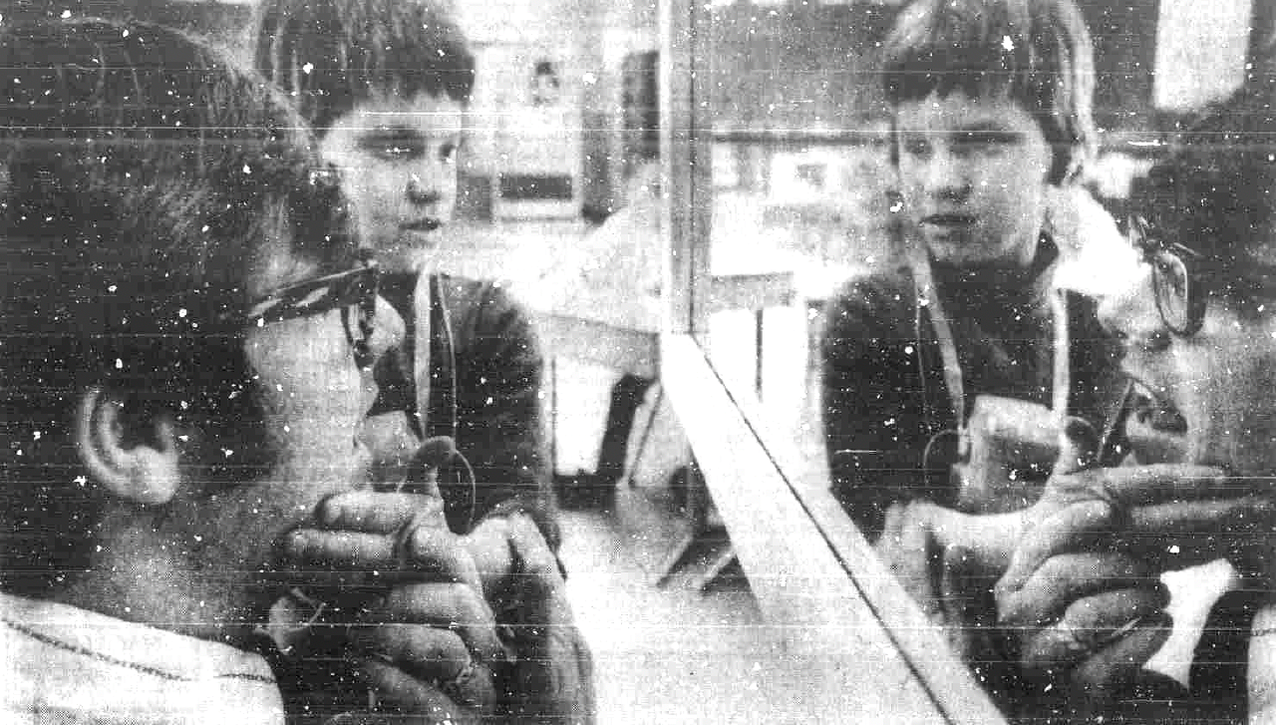
Deaf student Toni Ekenstam gets auditory training from Steven Noyce, a teacher of the deaf. Toni is taught to lip read and communicate with her own voice, one of several methods used to teach deaf children at the Utah School for the Deaf @ Deseret News, March 8, 1973. Deseret News Photo by Chief Photographer Don Groyston
Jeff W. Pollock, a member of the USDB Advisory Council representing the Utah Deaf community, requested on February 10, 2011, that the Utah School for the Deaf implement the guidelines titled "The National Agenda: Moving Forward on Achieving Educational Equality for Deaf and Hard of Hearing Students" to address philosophical, placement, communication, and service delivery biases. One of the members of the Advisory Council wondered if the Deaf National Agenda was solely based on ASL. He clarified that the Deaf National Agenda does not exclusively rely on ASL but instead emphasizes the holistic development of each child, supporting both ASL and spoken language, unlike the current system's "either/or" approach. Jeff then addressed Superintendent Noyce in the eyes and stated that the USD has reverted to the inefficient "Y" system of the last 30–40 years, with an oral OR sign, and is not providing both ASL and LSL to parents who want both options. Superintendent Noyce remained silent about the subject. The "Y" system mental trend in the two-track program with prevalent oral bias persisted until Joel Coleman, superintendent of Utah Schools for the Deaf and Blind, and Michelle Tanner, associate superintendent of Utah Schools for the Deaf, took action. Creating the Hybrid Program in 2016 was a significant step towards removing the requirement for parents to choose between the two programs "either/or." Their innovative approach is crucial and brings hope for unbiased and equal information. More information about the hybrid program can be found at the end of this webpage.
Suffice it to say, Dr. Grant B. Bitter was a prominent figure in Utah's oralism and mainstreaming movement, which had a significant impact on deaf education in Utah since 1962, despite the new two-track program and the school's option guidelines. As a result of his efforts, the number of students attending Ogden's residential school for Deaf students decreased, and the quality of education also declined. The mainstreaming approach gained popularity but left many alums heartbroken. Dr. Bitter also had significant power as a parental figure and used it to push for oralism, making it difficult for the Utah Association for the Deaf to challenge him. When the Teacher Training Program in the Department of Special Education at the University of Utah closed in 1986, he retired in 1987 (Bitter, A Summary Report for Tenure, March 15, 1985). Today, the Department of Special Education at the University of Utah offers a Specialization in Deaf and Hard of Hearing Program. While the curriculum does include American Sign Language classes, it still places a greater emphasis on listening and spoken language. This reflects the impact that Dr. Bitter, who passed away in 2000, continues to have on deaf education in Utah. To learn more about the evolving mainstreaming movement, visit the 'Dr. Robert G. Sanderson's Mainstreaming Perspective webpage.
The Utah Deaf Education
Core Group is Formed
Core Group is Formed
The Utah Deaf community was concerned that Steven W. Noyce, a long-time teacher and director of the Utah School for the Deaf, would seek to carry on Dr. Bitter's legacy, jeopardizing the ASL/English bilingual program they had worked so hard to establish when the Utah State Board of Education elected him superintendent of the Utah Schools for the Deaf and the Blind in August 2009. The state board disregarded the Utah Deaf community's outcry.
Steven Noyce was no stranger to the Utah Deaf community, having graduated from the Teacher Training Program at the University of Utah between 1965 and 1972 (LinkedIn: Steven Noyce). We were concerned about his advocacy for oral education. In response, Ella Mae Lentz, a co-founder of the Deafhood Foundation and a vocal champion for deaf education, proposed founding the Deaf Education Core Group in April 2010. The group aimed to protect ASL/English bilingual education and fight inequality in the deaf education system.
Following the 2005 USD/JMS merger, the staff of Jean Massieu Charter School, along with Utah Deaf community leaders and administrators from the Utah Schools for the Deaf, worked together to ensure that the ASL/English bilingual educational approach, which was integral to JMS, received equal resources as the oral educational approach, which was USD's primary approach. Initially, JMS had a good working relationship with the Utah School for the Deaf. However, when the Utah State Board of Education appointed Steven W. Noyce, an avowed oralist and active member of the Alexander Graham Bell Association, as superintendent of the Utah Schools for the Deaf and the Blind, the situation changed. There has been a long-standing debate in Utah, dating back to 1884, on whether to teach using oral or sign language methods in formal deaf education. After the merger, the debate subsided, and the ASL and oral (now called listening and spoken language) teams worked together peacefully. However, Superintendent Noyce used his position to push for LSL education, believing it superior to ASL/English, and vigorously promoted his mission at the Utah School for the Deaf. The revelation of Superintendent Noyce's hidden agenda sparked outrage among the Utah Deaf community. As a result, the controversy resurfaced and was more intense this time.
Julio Diaz, Minnie Mae Wilding-Diaz, Jeff Pollock, Dan Mathis, Stephanie Lowder Mathis, James (JR) Goff, Duane Kinner, and I were all part of the Utah Deaf Education Core Group. Bronwyn O'Hara, a hearing parent of Deaf children who battled Steven W. Noyce in the 1990s, joined the group to help us achieve our objectives. Although I've never met Dr. Bitter, I'm familiar with how his personality influenced his writing, which I found in his collection at the J. Willard Marriott Library at the University of Utah. It's clear that USDB Superintendent Noyce mirrored Dr. Bitter's personality, and their actions were strikingly similar. When I, the website's author, talk with the Deaf community about 'Deaf Education History in Utah,' I often refer to the 'Bitter Phase I group,' which was the first stage of their battle, and the 'Noyce Phase II group, 'which represented a similar battle in our approach and challenges. We were determined to improve deaf education in Utah despite facing significant challenges.
While serving on the USDB Institutional Council (2004–2010) and Legislative Task Force (2007–2009), I asked others who had come before me for help, such as Dr. Robert G. Sanderson, 87. On May 16, 2007, he responded to my email concerning the Utah Code, which governed the Utah Schools for the Deaf and the Blind. In the email, he told me, "It's up to young, vigorous, and enthusiastic deaf people like you to carry on." At the time, Robert and his wife, Mary, were enjoying their retirement, so I could not rely on his direct involvement when I requested assistance. During our conflict with USDB Superintendent Noyce in 2009, I recalled his words. Dr. Sanderson's statement encouraged me to continue the fight. The Utah Deaf Education Core Group was picking up where Dr. Sanderson, Ned C. Wheeler, W. David Mortensen, Lloyd H. Perkins, Kenneth L. Kinner, and others had left off in the fight for deaf education equality in Utah. The challenges that the young leaders were dealing with sprang from the past.
Julio Diaz, Minnie Mae Wilding-Diaz, Jeff Pollock, Dan Mathis, Stephanie Lowder Mathis, James (JR) Goff, Duane Kinner, and I were all part of the Utah Deaf Education Core Group. Bronwyn O'Hara, a hearing parent of Deaf children who battled Steven W. Noyce in the 1990s, joined the group to help us achieve our objectives. Although I've never met Dr. Bitter, I'm familiar with how his personality influenced his writing, which I found in his collection at the J. Willard Marriott Library at the University of Utah. It's clear that USDB Superintendent Noyce mirrored Dr. Bitter's personality, and their actions were strikingly similar. When I, the website's author, talk with the Deaf community about 'Deaf Education History in Utah,' I often refer to the 'Bitter Phase I group,' which was the first stage of their battle, and the 'Noyce Phase II group, 'which represented a similar battle in our approach and challenges. We were determined to improve deaf education in Utah despite facing significant challenges.
While serving on the USDB Institutional Council (2004–2010) and Legislative Task Force (2007–2009), I asked others who had come before me for help, such as Dr. Robert G. Sanderson, 87. On May 16, 2007, he responded to my email concerning the Utah Code, which governed the Utah Schools for the Deaf and the Blind. In the email, he told me, "It's up to young, vigorous, and enthusiastic deaf people like you to carry on." At the time, Robert and his wife, Mary, were enjoying their retirement, so I could not rely on his direct involvement when I requested assistance. During our conflict with USDB Superintendent Noyce in 2009, I recalled his words. Dr. Sanderson's statement encouraged me to continue the fight. The Utah Deaf Education Core Group was picking up where Dr. Sanderson, Ned C. Wheeler, W. David Mortensen, Lloyd H. Perkins, Kenneth L. Kinner, and others had left off in the fight for deaf education equality in Utah. The challenges that the young leaders were dealing with sprang from the past.
Did You Know?
In 1894, Henry C. White, a principal and teacher of the Utah School for the Deaf, criticized school administrators for failing to consult directly with Deaf adults. He asked, "What of the deaf themselves?" "Have they no say in a matter that entails their intellectual life and death?" (Buchanan, p. 28). One hundred and seventeen years later, in 2011, the Utah Deaf community was still battling with school administrators who refused to listen to Deaf adults, even when they were also parents. Yes, deaf education is "life and death" for us. We grew up in a system that was and still is, in many aspects, broken, inadequate, and oppressive. Understandably, we were frustrated.
In different time periods, both the Utah Association for the Deaf and the Utah Deaf Education Core Group were involved in similar political activities to oppose Bitter and Noyce. The famous saying "History repeats itself because people don't listen the first time" resonated with the Utah Deaf community. This was because the Utah State Board of Education had ignored our protests about the state's unequal deaf education system under the Two-Track Program. Fortunately, we knew about Dr. Bitter's past and were able to advocate for communication and educational equality. We established the Utah Deaf Education Core Group because of our knowledge of history and the possibility of a recurrence of the same problem under Superintendent Steven W. Noyce's administration at the Utah Schools for the Deaf.
Since 1962, Dr. Grant B. Bitter and his team have taken pride in developing a unique dual-track approach to deaf education. Only a few other state schools for the deaf in the United States offer this unique program, and the Utah School for the Deaf, particularly Steven W. Noyce, takes great pride in it. However, there has been an ongoing internal struggle between USD's oral and sign language programs. In both groups, the Utah Association for the Deaf and the Parent-Teacher-Student Association have persistently fought for equal promotion. They also pushed the Utah School for the Deaf to allow parents to select both oral and sign language options instead of just one. As a result of these developments, the Utah Deaf Education Core Group criticized USD's implementation of the dual-track approach and did not recommend it to other states.
Since 1962, Dr. Grant B. Bitter and his team have taken pride in developing a unique dual-track approach to deaf education. Only a few other state schools for the deaf in the United States offer this unique program, and the Utah School for the Deaf, particularly Steven W. Noyce, takes great pride in it. However, there has been an ongoing internal struggle between USD's oral and sign language programs. In both groups, the Utah Association for the Deaf and the Parent-Teacher-Student Association have persistently fought for equal promotion. They also pushed the Utah School for the Deaf to allow parents to select both oral and sign language options instead of just one. As a result of these developments, the Utah Deaf Education Core Group criticized USD's implementation of the dual-track approach and did not recommend it to other states.
Members of the Utah
Deaf Education Core Group
Deaf Education Core Group
The Utah Deaf Education Core Group analyzed general concerns in other states and found a pattern of interference by two prominent LSL campaigners from Utah: USDB Superintendent Steven W. Noyce and Dr. Karl R. White, Director of the National Center for Hearing Assessment and Management. The activities of Superintendent Noyce and Dr. White, who had expanded listening and spoken language to other states, helped me understand the difficulties faced by the Utah Association for the Deaf due to Dr. Grant B. Bitter. The Utah Deaf Education Core Group aimed to prevent other states from facing similar deaf education challenges in Utah.
The "Pro-Choice" Campaign
of the Utah Deaf Education Core Group
of the Utah Deaf Education Core Group
The Utah Deaf Education Core Group was aware of bias among staff members in favor of LSL services while restricting ASL/English services through the Parent Infant Program at the Utah School for the Deaf. Parents were often unaware of the ASL option until their Deaf child failed the LSL program, a condition known as oral failure or language deprivation. Additionally, the LSL team has a long history of dominating the USD. The Utah Deaf Education Core Group included ASL/English bilingual advocates and Deaf parents of Deaf children. They had no choice but to campaign for the "choice" approach, which implied that through the Parent Infant Program, parents have the right to know all of their options, including ASL/English and LSL. As a result, they were branded "Pro-Choice."
Campaigning for either pro-choice or parental choice is considered a warning sign, according to Deafhood Training by Marvin T. Miller in 2019. In simpler terms, if American Sign Language (ASL) and Listening and Spoken Language (LSL) options are offered in a state school for the deaf, LSL supporters might undermine or weaken the ASL/English bilingual Program. It was emphasized that we should firmly support ASL, just like the Delaware School for the Deaf and Indiana School for the Deaf did in 2011, when they resisted the LSL organization's efforts to introduce the LSL option in their schools. These state schools remained committed to their ASL/English bilingual program. However, for Utah, the situation is different. The dual-track program at the Utah School for the Deaf has been in place since 1962. It was challenging for them to revert to their original status, similar to the situation faced by the South Dakota School for the Deaf in 2005. Consequently, the Utah Deaf Education Core Group had limited options and had to advocate for choice within the existing system.
Campaigning for either pro-choice or parental choice is considered a warning sign, according to Deafhood Training by Marvin T. Miller in 2019. In simpler terms, if American Sign Language (ASL) and Listening and Spoken Language (LSL) options are offered in a state school for the deaf, LSL supporters might undermine or weaken the ASL/English bilingual Program. It was emphasized that we should firmly support ASL, just like the Delaware School for the Deaf and Indiana School for the Deaf did in 2011, when they resisted the LSL organization's efforts to introduce the LSL option in their schools. These state schools remained committed to their ASL/English bilingual program. However, for Utah, the situation is different. The dual-track program at the Utah School for the Deaf has been in place since 1962. It was challenging for them to revert to their original status, similar to the situation faced by the South Dakota School for the Deaf in 2005. Consequently, the Utah Deaf Education Core Group had limited options and had to advocate for choice within the existing system.
The Utah Deaf Education Core Group worked together to ensure equal access to quality education through two programs. Their main goal was to promote fair and unbiased communication and educational options for parents to choose from. The group was particularly concerned about the requirement that parents could only select one program instead of being able to choose both if desired. They insisted that all Deaf and hard of hearing children and their families had the right to decide to learn American Sign Language in addition to spoken language, rather than having to choose one over the other.
Jill Radford, Principal of the
Jean Massieu School of the Deaf, Has Shown Incredible Courageous in the Face of Oralism
Jean Massieu School of the Deaf, Has Shown Incredible Courageous in the Face of Oralism
Advocates for the ASL/English bilingual Program strongly believed that infants and toddlers should have more opportunities to assess their skills in signing and speaking so that parents can make a decision reflecting their child's potential as a visual or auditory learner. For example, Jill Radford, a Deaf individual and former principal of the Jean Massieu School of the Deaf, responded to reporter Rosemary Winters via email and asked, "How do parents know which language the child needs? I promote choice, but I strongly believe it needs to be the child's choice. Often, parents will pick what is most convenient for them and their family [which tends to be LSL] because the child needs to be able to communicate with them" (Winters, The Salt Lake Tribune, February 21, 2011). The ASL/English bilingual Program faced skepticism from the majority of administrators. Several administrators who supported the ASL/English bilingual Program quit, leaving Jill alone to fight Superintendent Noyce to protect JMS. Michelle Tanner, a teacher at the time, expressed the feeling of being a small army versus a larger army, according to Dan Mathis, a member of the Utah Deaf Education Core Group. Jill Radford still looked like a fighter but was also somewhat bruised up (Dan Mathis, personal communication, November 18, 2010).
When the Legislative Education Interim Committee summoned Superintendent Noyce to speak at their meeting on September 21, 2010, he delivered a damaging report. In response to Superintendent Noyce's deliberately misleading findings, Jill resigned abruptly in front of the USDB Advisory Council on August 25, 2011. After two years of persistent conflicts with Superintendent Noyce, this report was the final straw. Jill stood up to him and informed him that she was concerned about his dishonest report in front of everyone, saying, "I'm sorry, but I'm no longer capable of fighting you! My resignation letter has already been delivered to Associate Superintendent Trena Roueche." Jill's resignation was a devastating blow to JMS and the Utah Deaf community. "It was just one more example of dedicated individuals finally succumbing to the unrelenting paternalistic majority of hearing individuals who do not value or understand the importance of ASL among the [Utah] Deaf community," Purpleterp said in a newspaper story published by The Salt Lake Tribune on August 26, 2011 (Purpleterp, personal communication, August 26, 2011).
When the Legislative Education Interim Committee summoned Superintendent Noyce to speak at their meeting on September 21, 2010, he delivered a damaging report. In response to Superintendent Noyce's deliberately misleading findings, Jill resigned abruptly in front of the USDB Advisory Council on August 25, 2011. After two years of persistent conflicts with Superintendent Noyce, this report was the final straw. Jill stood up to him and informed him that she was concerned about his dishonest report in front of everyone, saying, "I'm sorry, but I'm no longer capable of fighting you! My resignation letter has already been delivered to Associate Superintendent Trena Roueche." Jill's resignation was a devastating blow to JMS and the Utah Deaf community. "It was just one more example of dedicated individuals finally succumbing to the unrelenting paternalistic majority of hearing individuals who do not value or understand the importance of ASL among the [Utah] Deaf community," Purpleterp said in a newspaper story published by The Salt Lake Tribune on August 26, 2011 (Purpleterp, personal communication, August 26, 2011).
Jill's resignation came as a shock to the Utah Deaf community. The Deaf Education Advocates accused Superintendent Noyce of giving preferential treatment to USD's LSL program over the ASL/English bilingual Program. When he targeted JMS, Jill was protecting the school. Superintendent Noyce, who was in his third year as superintendent, claimed that all programs had received equal funding. He stated that the listening and spoken language program has become increasingly popular in recent years, with about 70 percent of parents choosing the LSL track for their deaf and hard of hearing children before they enter preschool. Students learn to listen and speak; most can return to their neighborhood schools by the third grade. He also mentioned that a few students have transferred from the LSL to the ASL program, but it does happen (Winters, The Salt Lake Tribune, August 26, 2011). However, JMS consistently enrolled many 3rd graders with no language skills who struggled in the LSL program. Superintendent Noyce's report failed to address several factors contributing to poor academic achievement among JMS students.
The listening and spoken language administrators assigned the ASL/English bilingual program as a last resort to assist students who struggled with oral communication and had additional disabilities. It was similar to past programs like simultaneous communication and total communication. JMS also enrolled many Hispanic students from Spanish-speaking families due to its focus on bilingual education. These factors understandably contributed to language deprivation among the students. Jill expressed concern about LSL students' parents enrolling their children in the program regardless of their abilities. The ASL/English bilingual program was the last resort for students who didn't learn to listen and talk as quickly as their parents expected (Winters, The Salt Lake Tribune, August 26, 2011).
The listening and spoken language administrators assigned the ASL/English bilingual program as a last resort to assist students who struggled with oral communication and had additional disabilities. It was similar to past programs like simultaneous communication and total communication. JMS also enrolled many Hispanic students from Spanish-speaking families due to its focus on bilingual education. These factors understandably contributed to language deprivation among the students. Jill expressed concern about LSL students' parents enrolling their children in the program regardless of their abilities. The ASL/English bilingual program was the last resort for students who didn't learn to listen and talk as quickly as their parents expected (Winters, The Salt Lake Tribune, August 26, 2011).
Jill was not alone in this situation. Superintendent Noyce's narrative also took JMS parents and members of the Utah Deaf community by surprise. As previously noted, the study did not divulge all the details about why JMS's academic achievement outcomes were so low. People suspected Superintendent Noyce of fabricating statistics for personal gain, potentially to discredit both JMS and KBS (Kenneth Burdett School of the Deaf in Ogden). Superintendent Noyce said in defense, "It really shouldn't be a reflection on the teachers or JMS. "We need to find out why the scores are lower and know what we can do to fix that." "The measure of success for all of our students is how well they can read, write, and use math. Our role as educators, frankly, is to teach them to read and write. Whether they speak or use sign language is not the important part" (Winters, The Salt Lake Tribune, August 26, 2011). The Utah Deaf Education Core Group disputed Superintendent Noyce's assertions. They suspected the two-track program was using tainted statistics to punish them for speaking up against inequality. The Utah Deaf Education Core Group praised Jill Radford for standing up for Deaf children's right to education despite her "unprofessional" resignation, as the Utah State Board of Education claimed. She was a hero to the Utah Deaf Community because she dared to challenge Superintendent Noyce.
Jacob Dietz, a JMS hearing father of two Deaf children, said of Jill Radford, "It's one less advocate that we have in the education system fighting for our kids." "I also understand she's been fighting an uphill battle for the last couple of years, and it's hard to do that" (Winters, The Salt Lake Tribune, August 26, 2011).
Jacob Dietz, a JMS hearing father of two Deaf children, said of Jill Radford, "It's one less advocate that we have in the education system fighting for our kids." "I also understand she's been fighting an uphill battle for the last couple of years, and it's hard to do that" (Winters, The Salt Lake Tribune, August 26, 2011).
Jill Radford Meets Dr. Martell Menlove,
Utah Deputy State Superintendent
of Public Instruction
Utah Deputy State Superintendent
of Public Instruction
Jill Radford's departure had a significant impact on JMS's parents and the Utah Deaf community. They had never seen Jill as someone who put in long hours at work without getting personally invested. She had consistently been involved in every part of JMS, from the top down. JMS had been her entire life at the expense of her own health and happiness. Following her departure, Jill promised to continue campaigning for the rights and needs of Deaf and hard of hearing children. On the Facebook page, Brittany Watterson, a former USD student, made a great analogy of Mr. Noyce, saying, "When there is a will, there is a way. Noyce is a good example. He is very passionate about his flawed beliefs and even after many battles we have taken out on him, he is still standing strong" (Brittany Watterson, personal communication, August 26, 2011). While Superintendent Noyce stood firm, her reference to Principal Jill Radford and the Utah Deaf Education Core Group's ongoing conflicts and challenges with him was spot on.
After Jill Radford resigned, she informed Dr. Martell Menlove, the Utah Deputy State Superintendent of Public Instruction, about the Utah Association of the Deaf's formation of an Education Committee. The committee's main objective was to prove to the Utah State Board of Education that ASL/English bilingual education can effectively educate all Deaf children. They believed they could achieve this by eliminating the "Y" system mindset, the "either/or" approach, and promoting parent unity instead of division. However, this issue remained unresolved until Joel Coleman, the newly appointed superintendent who replaced Steven of the Utah Schools for the Deaf and the Blind in 2013, appointed Michelle Tanner as Associate Superintendent of the Utah School for the Deaf in 2014 to oversee it.
A Vigil To Get USDB
Superintendent Ousted
Superintendent Ousted
The Utah State Board of Education stood ready to decide the fate of Steven W. Noyce's two-year contract on the crucial date of May 5, 2011. A collective of around 50 parents from the Jean Massieu School of the Deaf and members of the Utah Deaf community arranged a peaceful vigil outside the Utah State Board of Education meeting to draw attention to equality in deaf education at the Utah School for the Deaf. This vigil was a persistent request to remove Steven W. Noyce, the superintendent of Utah Schools for the Deaf and the Blind. In August 2009, the board appointed Steven Noyce as superintendent, with a minimum tenure of two years. At the request of several Deaf education activists, the board recently conducted a comprehensive '360-degree' evaluation of his job performance, which involved feedback from both staff and parents, to assess his effectiveness in leading the school (Winters, The Salt Lake Tribune, May 5, 2011).
The Utah School for the Deaf faced tension between its two programs: American Sign Language (ASL), which teaches English as a second language, and listening and spoken language (LSL), which relies on new technologies to help Deaf children listen and speak without signing. The tension arose due to differing views on the most effective method of deaf education, with some advocating for the traditional ASL approach and others supporting the innovative LSL program (Winters, The Salt Lake Tribune, May 5, 2011).
ASL/English bilingual supporters gathered at the State Board to demand Steven's removal for promoting and advocating for the LSL program. They believed that the ASL approach was more inclusive and effective for deaf education. However, in 2011, parents in the LSL program e-mailed a petition to the state school board, resulting in 395 signatures supporting him. These parents argued that the LSL program was a groundbreaking method that allowed their children to communicate more effectively (Winters, The Salt Lake Tribune, May 5).
Trenton Marsh, a member of the Utah Deaf community, and I entered the meeting room after the board meeting ended. We encountered a range of reactions, from dismay to disgust, with some board members skaking their heads in disapproval. The board members' lack of understanding and empathy served as a harsh reminder of the uphill battle the Utah Deaf Education Core Group faced in their efforts to terminate Superintendent Noyce's contract.
The Utah School for the Deaf faced tension between its two programs: American Sign Language (ASL), which teaches English as a second language, and listening and spoken language (LSL), which relies on new technologies to help Deaf children listen and speak without signing. The tension arose due to differing views on the most effective method of deaf education, with some advocating for the traditional ASL approach and others supporting the innovative LSL program (Winters, The Salt Lake Tribune, May 5, 2011).
ASL/English bilingual supporters gathered at the State Board to demand Steven's removal for promoting and advocating for the LSL program. They believed that the ASL approach was more inclusive and effective for deaf education. However, in 2011, parents in the LSL program e-mailed a petition to the state school board, resulting in 395 signatures supporting him. These parents argued that the LSL program was a groundbreaking method that allowed their children to communicate more effectively (Winters, The Salt Lake Tribune, May 5).
Trenton Marsh, a member of the Utah Deaf community, and I entered the meeting room after the board meeting ended. We encountered a range of reactions, from dismay to disgust, with some board members skaking their heads in disapproval. The board members' lack of understanding and empathy served as a harsh reminder of the uphill battle the Utah Deaf Education Core Group faced in their efforts to terminate Superintendent Noyce's contract.
When we inquired about the board's decision on Steven Noyce's contract, Dr. Martall Menlove, Utah's Deputy State Superintendent of Public Instruction, informed us that the board had yet to reach a conclusion. This move was likely a strategic decision to prevent the vigil attendees from protesting, leaving the audience in suspense about the superintendent's future contract. With the support of 395 LSL signatures, Steven Noyce renewed his other two-year contract for 2011–2013.
Between 2010 and 2011, the Utah Deaf Education Core Group, deeply disappointed, attempted to remove Steve W. Noyce from his two-year contract. Despite our efforts, which included a peaceful vigil, the Utah State Board of Education members voted to extend Superintendent Noyce's contract for another two years after 395 listening and spoken language supporters signed a petition and wrote a letter supporting him. This decision was considered a victory for LSL families by Anissa Wardell, an LSL parent who expressed her agreement on her blog, as shown above. However, Superintendent Noyce portrayed the core group as radical, similar to Dr. Bitter's feud against the Utah Association for the Deaf, especially Dr. Robert G. Sanderson. After exhausting all possibilities to terminate his contract, the Utah Deaf Education Core Group remained silent for two years.
As Robert Heinlein wisely said, 'A generation that ignores history has no past and no future.' This quote underscores the urgency and importance of understanding Utah's long history of political conflict over educational inequality to advocate effectively for Deaf children's communication and language rights. Even if Deaf activists cannot continue to preserve the ASL/English bilingual program indefinitely, they can pass it on to future generations, like the Utah Association for the Deaf during Bitter Phase I, when they passed the torch to the Utah Deaf Education Group Core in Noyce Phase II. In the third phase, we aim to avoid a repeat of the past, urging the future administrator of the Utah School for the Deaf to consider the Utah Deaf Community, unlike the time when Steven W. Noyce took over as USDB Superintendent without our input. Michelle Tanner joined us in making our voices heard when Joel Coleman became superintendent of the Utah Schools for the Deaf and Blind in 2013, replacing Steven Noyce.
As the author of this website, I would like to clarify the Utah Deaf Education Core Group's stance and actions. We were an activist group, not a radical or fanatic one, as Superintendent Noyce and the LSL group claimed. Our primary concern was the potential compromise of the ASL/English bilingual program, and we worked diligently to prevent Superintendent Noyce from achieving his objective. Despite our efforts, he continued to push LSL services and mainstream opportunities, much like a football player sprinting towards the goal line. Ultimately, he had the opportunity to carry on Dr. Bitter's legacy until Joel Coleman and Michelle Tanner took over the administration of the Utah School for the Deaf and put an end to it by implementing the hybrid program, as detailed in the section below. This clarification is crucial for understanding our core group's motivations and actions.
As Robert Heinlein wisely said, 'A generation that ignores history has no past and no future.' This quote underscores the urgency and importance of understanding Utah's long history of political conflict over educational inequality to advocate effectively for Deaf children's communication and language rights. Even if Deaf activists cannot continue to preserve the ASL/English bilingual program indefinitely, they can pass it on to future generations, like the Utah Association for the Deaf during Bitter Phase I, when they passed the torch to the Utah Deaf Education Group Core in Noyce Phase II. In the third phase, we aim to avoid a repeat of the past, urging the future administrator of the Utah School for the Deaf to consider the Utah Deaf Community, unlike the time when Steven W. Noyce took over as USDB Superintendent without our input. Michelle Tanner joined us in making our voices heard when Joel Coleman became superintendent of the Utah Schools for the Deaf and Blind in 2013, replacing Steven Noyce.
As the author of this website, I would like to clarify the Utah Deaf Education Core Group's stance and actions. We were an activist group, not a radical or fanatic one, as Superintendent Noyce and the LSL group claimed. Our primary concern was the potential compromise of the ASL/English bilingual program, and we worked diligently to prevent Superintendent Noyce from achieving his objective. Despite our efforts, he continued to push LSL services and mainstream opportunities, much like a football player sprinting towards the goal line. Ultimately, he had the opportunity to carry on Dr. Bitter's legacy until Joel Coleman and Michelle Tanner took over the administration of the Utah School for the Deaf and put an end to it by implementing the hybrid program, as detailed in the section below. This clarification is crucial for understanding our core group's motivations and actions.
Superintendent Steven W. Noyce's
Two-Year Contract Ends
Two-Year Contract Ends
Superintendent Noyce's contract was terminated in 2013. The Utah State Board of Education unanimously voted not to extend his appointment on January 10, 2013. The state school board's chairperson, Debra Roberts, declined to reveal why the board decided not to extend Steve's contract, citing privacy concerns. She mentioned that there had been no misconduct and that the board had been debating the matter for months (Schencker, The Salt Lake Tribune, January 10, 2013). The news came as a surprise to Steven. He explained, "There have been long-standing controversies at the school. I don't imagine that's the reason, though, because, frankly, for the last 18 months, things have been very, very quiet" (Schencker, The Salt Lake Tribune, January 10, 2013). As of today, the reason for his contract's termination remains unknown.
I can't help but question what might be a better course of action. Should they take a more active or passive role in the movement? Consider what could have happened if the Utah Association for the Deaf had not battled to safeguard sign language at the Utah School for the Deaf throughout the 1960s and 1970s. If the Utah Deaf Education Core Group had remained subservient, could ASL have died out completely? Would ASL/English bilingual education be jeopardized? Would the Jean Massieu School of the Deaf, Kenneth C. Burdett School of the Deaf, and Elizabeth DeLong School of the Deaf still exist today? Could the oral education movement have swept Utah? In such circumstances, there was no win-win situation.
In the 2013–14 school year, Associate Superintendent Michelle Tanner of the Utah School for the Deaf and Superintendent Joel Coleman of the Utah Schools for the Deaf and the Blind—who was also a member of the Utah State Board of Education during the conflict between Superintendent Noyce and the Utah Deaf Education Core Group—recognized the critical need for equal ASL/English and LSL options as well as an equitable educational system. Their collaboration and efforts made a significant contribution to the development of an inclusive educational system.
I can't help but question what might be a better course of action. Should they take a more active or passive role in the movement? Consider what could have happened if the Utah Association for the Deaf had not battled to safeguard sign language at the Utah School for the Deaf throughout the 1960s and 1970s. If the Utah Deaf Education Core Group had remained subservient, could ASL have died out completely? Would ASL/English bilingual education be jeopardized? Would the Jean Massieu School of the Deaf, Kenneth C. Burdett School of the Deaf, and Elizabeth DeLong School of the Deaf still exist today? Could the oral education movement have swept Utah? In such circumstances, there was no win-win situation.
In the 2013–14 school year, Associate Superintendent Michelle Tanner of the Utah School for the Deaf and Superintendent Joel Coleman of the Utah Schools for the Deaf and the Blind—who was also a member of the Utah State Board of Education during the conflict between Superintendent Noyce and the Utah Deaf Education Core Group—recognized the critical need for equal ASL/English and LSL options as well as an equitable educational system. Their collaboration and efforts made a significant contribution to the development of an inclusive educational system.
Did You Know?
Joel Coleman, who joined the Utah State Board of Education in 2010 and later became superintendent of the Utah Schools for the Deaf and Blind in 2013, is Rachel Coleman's brother-in-law, who created the "Signing Time" films.
Dr. Robert G. Sanderson's Dream for an
Equal Deaf Education System
Equal Deaf Education System
Since 1962, the Utah Association for the Deaf has been active in political conflicts over deaf education inequalities. The dual-track and two-track programs were hotly debated topics. Various teaching practices, communication methods, educational philosophies, and concerns about the least restrictive environment (LRE) have all contributed to division among administrators, teachers, parents, and Utah Deaf community members. The Utah Deaf Education Core Group remained determined to realize Dr. Robert G. Sanderson's vision of an equal deaf education system despite conflicts with Superintendent Noyce. Finally, in 2013 and 2014, USDB Superintendent Joel Coleman and Associate Superintendent Michelle Tanner recognized Dr. Sanderson's dream of an equal deaf education system, which validated the Utah Deaf Education Core Group's efforts. They made it a reality by providing parents with equal and fair information. This is a significant milestone in pursuing an equal educational system for Deaf students.
See the part below on Dr. Robert G. Sanderson's Dream, which he published on page 8 in the UAD Bulletin in July 1992.
See the part below on Dr. Robert G. Sanderson's Dream, which he published on page 8 in the UAD Bulletin in July 1992.
“MY DREAM”
“This is my dream and only mine. I’ll share it with you, even though some of you may think it’s more like a nightmare.
I dream:
That every deaf child in Utah will get an education as good as if not better than that provided to normally hearing children in the public schools;
That every deaf child will be encouraged and helped to develop his or her own identity as a person who is deaf, and who is not ashamed of deafness;
That each child will be carefully evaluated by unbiased professionals who have the best interests of the child at heart, rather than their personal philosophies.
I dream:
That there will be high quality options for parents who wish only the best for their children who are deaf, such as:
I dream:
That these quality schools will have:
I dream:
That there will be a program to get parents involved with adults who are deaf, to learn that we are anxious to help and to share our real life knowledge of what living with deafness is like.
And yes, I dream that we can all work together to make it happen! (Sanderson, UAD Bulletin, July 1992).”
I dream:
That every deaf child in Utah will get an education as good as if not better than that provided to normally hearing children in the public schools;
That every deaf child will be encouraged and helped to develop his or her own identity as a person who is deaf, and who is not ashamed of deafness;
That each child will be carefully evaluated by unbiased professionals who have the best interests of the child at heart, rather than their personal philosophies.
I dream:
That there will be high quality options for parents who wish only the best for their children who are deaf, such as:
- A top-quality comprehensive residential school for deaf children who live far from urban schools;
- A high quality day school with proper grading K-12 in a central division location in each of the major cities, SLC, Ogden, and Provo—in which children who are deaf may interact freely with their peers;
- Schools in which communication philosophies fit the child, and not the child to the philosophies.
I dream:
That these quality schools will have:
- Administrators who know who to motivate and get the best out of their teachers;
- Top-quality professional teachers who not only understand the subjects they teach, but deafness as well, and who will earn salaries commensurate with the special skills they have;
- That all graduates of the Utah School for the Deaf will score in the top 20% of all high school graduate statewide, and will qualify for higher education if they so desire.
I dream:
That there will be a program to get parents involved with adults who are deaf, to learn that we are anxious to help and to share our real life knowledge of what living with deafness is like.
And yes, I dream that we can all work together to make it happen! (Sanderson, UAD Bulletin, July 1992).”
The Implementation of the Hybrid Program
at the Utah School for the Deaf
at the Utah School for the Deaf
Michelle Tanner, with Joel's support, turned Dr. Sanderson's dream into a reality in 2016, a full twenty-four years after its publication in 1992. Their creation, the hybrid program, has not only enabled unbiased collaboration between the listening and spoken language program and the ASL/English bilingual program but has also resulted in offering personalized deaf education placements. This program has effectively eliminated the need for parents to make an 'either/or' decision between the two programs, marking a significant step towards providing unbiased and equal information. Joel and Michelle's roles in this achievement are pivotal. Their collaboration has the potential to revolutionize deaf education equity for all Utah Deaf and hard of hearing students, instilling hope and optimism for a brighter future.
The Collaboration Between the Listening & Spoken Language and ASL/English Bilingual
Departments Faces Challenges
Departments Faces Challenges
Michelle Tanner, a long-serving teacher and director at the Utah School for the Deaf (USD), was appointed Associate Superintendent in 2014. She works under Superintendent Joel Coleman, who was appointed by the Utah State Board of Education in 2013. During Michelle's first year as Associate Superintendent, she seriously considered the "Y" system mentality that had been in place at the USD for years. Many parents were confused about why they had to choose one option over the other. Michelle wondered if the long-standing dispute over the education of Deaf and hard of hearing students could ever be resolved. "Will this fight ever end?" she pondered. The battle has been well-documented throughout history on numerous continents. She thought aloud, "Can the two factions ever get along?" Michelle realized, as she contemplated these issues, that she had the capacity and authority in her current position to try something different for the state of Utah. In this case, she might have some influence. But how could she go about doing it?
Michelle, a strong advocate for ASL/English bilingual education, wondered how she could get listening, spoken language (LSL), and ASL/English bilingual to work together. Her goal was to break free from the "Y" system mindset. She recognized that in today's culture, we value options and the ability to create the option that best suits our needs. Michelle knew that the LSL and ASL/English bilingual departments in Salt Lake City and Ogden shared a campus. As a result, she started by changing policies to eliminate the "either/or" mindset. Michelle spoke with the educational directors and emphasized that in the preschool program, parents would no longer have to choose between the two options, and instructors would be able to stick to their educational philosophy. Students would be the ones to go from class to class based on the IEP team's decision. Teachers would be able to maintain true to their methodology approach while students could get an education in both programs. At the same time, Michelle informed parents of students transferring to Part B services about the change, explaining that they no longer had to choose between LSL and ASL/English options; they could attend both classes.
The ASL/English teachers were very accepting and supportive of the change. The LSL teachers, on the other hand, faced fierce opposition throughout the first two years of implementation. Despite the subterfuge and attempts to sway parents away from the ASL/English bilingual education, Michelle stood firmly with the newly designed hybrid program to provide equal family options. Furthermore, the LSL teachers' determination motivated some parents to obtain statistics to verify whether or not the program worked before making a decision, resulting in some filing complaints with the Utah State Board of Education. Many LSL teachers were adamant about not collaborating with ASL/English teachers. Michelle was highly involved in weekly meetings with all the teachers at the time, addressing questions and resolving conflicts. Each year, the USD team readjusted and strengthened their work, reorganizing how they shared students. The USD administration also implemented a strict policy prohibiting one teacher from speaking with a parent without the involvement of the partnering teacher from the other teaching philosophy. They had to remove some teachers from these cooperation tasks and replace them with more open-minded teachers.
Michelle, a strong advocate for ASL/English bilingual education, wondered how she could get listening, spoken language (LSL), and ASL/English bilingual to work together. Her goal was to break free from the "Y" system mindset. She recognized that in today's culture, we value options and the ability to create the option that best suits our needs. Michelle knew that the LSL and ASL/English bilingual departments in Salt Lake City and Ogden shared a campus. As a result, she started by changing policies to eliminate the "either/or" mindset. Michelle spoke with the educational directors and emphasized that in the preschool program, parents would no longer have to choose between the two options, and instructors would be able to stick to their educational philosophy. Students would be the ones to go from class to class based on the IEP team's decision. Teachers would be able to maintain true to their methodology approach while students could get an education in both programs. At the same time, Michelle informed parents of students transferring to Part B services about the change, explaining that they no longer had to choose between LSL and ASL/English options; they could attend both classes.
The ASL/English teachers were very accepting and supportive of the change. The LSL teachers, on the other hand, faced fierce opposition throughout the first two years of implementation. Despite the subterfuge and attempts to sway parents away from the ASL/English bilingual education, Michelle stood firmly with the newly designed hybrid program to provide equal family options. Furthermore, the LSL teachers' determination motivated some parents to obtain statistics to verify whether or not the program worked before making a decision, resulting in some filing complaints with the Utah State Board of Education. Many LSL teachers were adamant about not collaborating with ASL/English teachers. Michelle was highly involved in weekly meetings with all the teachers at the time, addressing questions and resolving conflicts. Each year, the USD team readjusted and strengthened their work, reorganizing how they shared students. The USD administration also implemented a strict policy prohibiting one teacher from speaking with a parent without the involvement of the partnering teacher from the other teaching philosophy. They had to remove some teachers from these cooperation tasks and replace them with more open-minded teachers.
The Utah School for the Deaf team has significantly progressed from 2014 to 2020, creating a more collaborative environment. This progress has led to Michelle no longer needing to attend weekly teacher meetings, as the teachers are now more cooperative. In August 2016, the term "hybrid" was coined to describe the newfound collaboration between classes, essentially creating an ASL/English bilingual program. This program required collaboration between two faculties, creating the term "hybrid" program. Michelle refers to it as a "collaboration" between the LSL and ASL/English bilingual programs or a personalized deaf education placement, which ends in 1st grade. Due to these improvements, some parents have expressed interest in extending this opportunity to older grades, and the Utah School for the Deaf team is exploring their options. Based on their findings, students either return to a district program (if they are more oral) or continue in the ASL/English bilingual program. Parents are advocating for the Utah School for the Deaf to continue providing this structure for students in the upper grades who need it.
The ultimate goal of providing education for Deaf and hard of hearing students is to ensure that parents have access to a range of options and do not feel restricted to a limited choice for their child's education. This approach, which introduces American Sign Language (ASL) without forcing students into a placement that isn't effective, has been successful in reducing language deprivation. Michelle Tanner noted that parents are not just satisfied but thrilled that the Utah School for the Deaf team has moved away from the "Y" system approach and is now working collaboratively to meet the specific needs of each student (Michelle Tanner, personal communication, October 17, 2021). Joel and Michelle are essential administrators who have played a vital role in achieving the objectives of Dr. Jay J. Campbell and Dr. Robert G. Sanderson. Their innovative approach is crucial and brings hope for unbiased and equal information. They have shown great support and bravery in improving the system for all parties involved, and their joint efforts have marked a significant step forward in the pursuit of a more inclusive educational system.
The ultimate goal of providing education for Deaf and hard of hearing students is to ensure that parents have access to a range of options and do not feel restricted to a limited choice for their child's education. This approach, which introduces American Sign Language (ASL) without forcing students into a placement that isn't effective, has been successful in reducing language deprivation. Michelle Tanner noted that parents are not just satisfied but thrilled that the Utah School for the Deaf team has moved away from the "Y" system approach and is now working collaboratively to meet the specific needs of each student (Michelle Tanner, personal communication, October 17, 2021). Joel and Michelle are essential administrators who have played a vital role in achieving the objectives of Dr. Jay J. Campbell and Dr. Robert G. Sanderson. Their innovative approach is crucial and brings hope for unbiased and equal information. They have shown great support and bravery in improving the system for all parties involved, and their joint efforts have marked a significant step forward in the pursuit of a more inclusive educational system.
Implementing and Promoting Language Equality and Acquisition for Deaf Children (LEAD-K)
The purpose of this section is to provide background information regarding the implementation and promotion of Language Equality and Acquisition for Deaf Children (LEAD-K). On October 8, 2015, California passed Senate Bill 210 to advance the 1994 Deaf Child's Bill of Rights. The law requires all Deaf and hard of hearing babies in California to have language acquisition assessments every six months until they are five (California Department of Education, 1994; California Legislative Information, 2015). Julie Rems-Smario, a Deaf Education advocate and political activist who spearheaded the LEAD-K, encourages all other states to follow California's lead, which Utah did, as detailed below. The Senate Bill aims to ensure that deaf and hard of hearing children are academically prepared for kindergarten. Following the bill's passage, the Language Equality and Acquisition for Deaf Kids (LEAD-K) organization was established with the goal of providing equal access to language acquisition and literacy for Deaf and hard of hearing children before they enter kindergarten (California Legislative Information, 2015; Deaf Nation, 2015; Endeavors, Fall 2015).
In 2018, the administration of Coleman/Tanner introduced the LEAD-K (Language Equality and Acquisition for Deaf Kids) Policy, which was a pioneering initiative that offered parents more options instead of a restrictive 'either/or' situation. The LEAD-K policy aims to ensure that Deaf children are fully prepared for kindergarten by promoting language equality and acquisition. In 2021, the USD Language and Communication Policy underwent an amendment, incorporating clear standards for listening and spoken language programs and an ASL/English bilingual program. It is a significant step in the right direction after over 50 years of prevalent oral bias that prevented parents from receiving clear information about their children's educational and communication options. This amendment provides accurate information about communication and educational options, ensuring that students have access to the communication and language support they need. Dr. Jay J. Campbell, the Deputy Superintendent of the Utah State Office of Education and a crucial ally of the Utah Deaf community, first proposed this approach in 1977, which Dr. Grant B. Bitter, an oral and mainstreaming advocate, rejected. It is a beacon of hope for the Utah Deaf community.
Dr. Sanderson, though no longer with us since 2012, would have been deeply appreciative of Michelle Tanner for bringing his vision to life. As a Deaf parent with two Deaf children and a former Deaf Education Advocate, I am convinced that our collaborative efforts, with my research on Utah Deaf History and Michelle's implementation of effective ideas and strategies, have greatly benefited the LSL and ASL/English bilingual departments. These plans were crucial for both programs to effectively serve parents and children. It may have taken time, but the impact is undeniable. I extend my heartfelt gratitude to Michelle Tanner for not only studying the Utah Deaf History website but also for implementing these strategies, thereby enhancing her advocacy for the Utah Deaf community, including the Deaf, Hard of Hearing, DeafBlind, and DeafDisabled.
Dr. Sanderson, though no longer with us since 2012, would have been deeply appreciative of Michelle Tanner for bringing his vision to life. As a Deaf parent with two Deaf children and a former Deaf Education Advocate, I am convinced that our collaborative efforts, with my research on Utah Deaf History and Michelle's implementation of effective ideas and strategies, have greatly benefited the LSL and ASL/English bilingual departments. These plans were crucial for both programs to effectively serve parents and children. It may have taken time, but the impact is undeniable. I extend my heartfelt gratitude to Michelle Tanner for not only studying the Utah Deaf History website but also for implementing these strategies, thereby enhancing her advocacy for the Utah Deaf community, including the Deaf, Hard of Hearing, DeafBlind, and DeafDisabled.
Deaf Representatives
Make Up 51% of USD Committees
Make Up 51% of USD Committees
Under Associate Superintendent Michelle Tanner's administration, a committee comprising more than 51% Deaf individuals formed the LEAD-K Policy, mirroring the approach of Gallaudet University's Board of Trustees after the 1988 Deaf President Now protest. USD adopted the California law's recommendations for team members and goals for LEAD-K. The Utah School for the Deaf also ensures that the Communication and Language Policy Committee, like all other committees, follows the same structure. Michelle believed it was necessary for all policy changes and everything that would affect Deaf and hard of hearing students and employees.
The LEAD-K Committee included both ASL and LSL Deaf representatives, who worked with USD ASL and LSL administrators to create the policy. The Deaf representatives on the LEAD-K were Philippe Montalette, Leanna Turman Gale, Brooke Budzinski Grossinger, Jared Allebest, Stephanie Morgan, Lori Ruth, and Jamie Warengo. While serving on the LEAD-K Committee, Philippe and Jared were also members of the USDB Advisory Council. I sincerely appreciate Michelle Tanner's decision to recognize the importance of a deaf voice in articulating issues related to deaf education and providing Deaf individuals with this opportunity to contribute.
The LEAD-K Committee included both ASL and LSL Deaf representatives, who worked with USD ASL and LSL administrators to create the policy. The Deaf representatives on the LEAD-K were Philippe Montalette, Leanna Turman Gale, Brooke Budzinski Grossinger, Jared Allebest, Stephanie Morgan, Lori Ruth, and Jamie Warengo. While serving on the LEAD-K Committee, Philippe and Jared were also members of the USDB Advisory Council. I sincerely appreciate Michelle Tanner's decision to recognize the importance of a deaf voice in articulating issues related to deaf education and providing Deaf individuals with this opportunity to contribute.
Note
Will update the references later.
Michelle Tanner, personal communication, October 17, 2021.
Michelle Tanner, personal communication, October 17, 2021.
References
"Beth Ann Stewart Campbell Interview." YouTube, October 15, 2010.
Sanderson, R.G. (1992, July). My Dream. UAD Bulletin, Vol. 17, No. 2, p. 8.
Sanderson, R.G. (1992, July). My Dream. UAD Bulletin, Vol. 17, No. 2, p. 8.


